.png)
Supplemental oxygen therapy is vital for people with chronic respiratory conditions who experience low blood oxygen levels. When a patient’s blood oxygen level falls below what’s considered normal, this is known as hypoxemia, and it’s a potentially serious condition — especially when it prolongs over long periods of time. The longer you experience hypoxemia, the more likely you are to have heart or brain complications along with many other systemic issues.
Unfortunately, many people who are prescribed supplemental oxygen decide not to use it for one reason or another. Some people believe it’s too expensive to maintain while others are turned off by the idea of carrying an oxygen device around wherever they go. If this sounds like you, it’s important to remember that — while oxygen therapy can often feel like it’s more trouble than it’s worth — your doctor prescribed you oxygen because he/she was looking after your long-term health.
{{cta('fa8abc2a-1e88-4fa3-82fd-1cb5b9ed43b2','justifycenter')}}
The good news is that you don’t have to simply “settle” for one oxygen device or another. There are hundreds of different oxygen machines on the market and our oxygen specialists at LPT Medical are here to help you find the best one for your needs. In this post, we’re going to take a look at the portable oxygen concentrators with the most intuitive design in 2021. In other words, we’ll help you decide the best POC for ease of use so that you don’t feel the need to fall back on your oxygen treatment plan.
If you have any questions or you would like more information about the concentrators below, please reach out to us by phone or email.
What Does it Mean to Have An “Intuitive Design”?
The term “intuitive design” refers to something that’s easy to pick up and learn how it works without sifting through user manuals or consulting the device manufacturer. A great example of this would be a web page. Rather than presenting you with tons of information that you don’t need, web pages tend to be concise and help you navigate quickly to where you’re trying to get on the website. This is also very similar to the way that portable oxygen concentrators are designed.
.jpg)
As opposed to oxygen tanks which are solely designed to be functional, portable oxygen concentrators are designed with both functionality and usability in mind. What this means is that they not only provide you with the oxygen you need, but they make it easy to use. Portable oxygen concentrators manufactured by reputable companies tend to have easy-to-learn user interfaces with only a few buttons to remember. If you struggled to learn how your smartphone works and you believe POCs will be the same, don’t worry because there are plenty of options out there for you. Without further ado, let’s take a look at the most intuitive concentrators of 2021.
5.) The AirSep FreeStyle 5
AirSep is one of the most recognized names in the oxygen industry. They were founded in the 1980s in Buffalo, New York, and they’ve since been known for their heavy-duty industrial oxygen machines as well as their personal medical oxygen generators. AirSep was recently acquired by Chart Industries Inc. which has expanded their global reach and put them alongside other oxygen brands such as Caire Inc., Inogen, and Respironics.
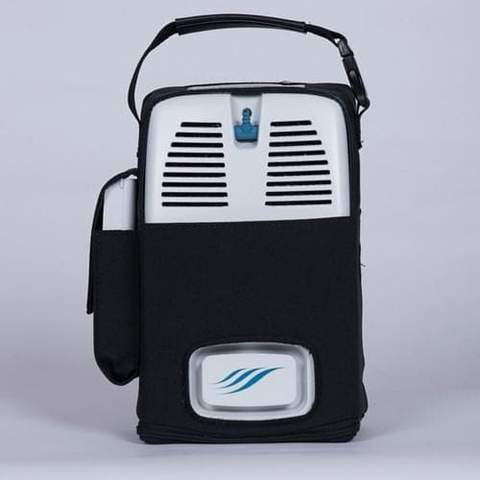
The FreeStyle 5 is one of the first AirSep concentrators under 8 pounds with a flow rating of 5. It’s also one of the few portable oxygen concentrators out there that has gotten a full redesign to make it more user-friendly and reliable. AirSep made several internal changes to the unit, but most people are more interested in hearing about the changes to the exterior. The biggest change they made was to the battery system. As opposed to using the internal battery system, the new design has an external battery. The benefit of this is that you don’t need to open a compartment in order to replace the batteries.
One thing that’s unique about the FreeStyle 5 is that it doesn’t have a control panel screen like most other portable oxygen concentrators. It just has one button for each of the 5 flow settings and a light above it so that you know which one is activated. This makes it the perfect concentrator for people who are intimidated by all the symbols and icons on other concentrators. With the FreeStyle 5, you won’t have very much to worry about.
4.) The AirSep Focus
It almost feels like we’re cheating by putting the AirSep Focus on this list, but it’s worth mentioning nonetheless. The AirSep Focus is the lightest portable oxygen concentrator on the planet and it’s also one of the most intuitive. Since the experts at AirSep wanted to make a concentrator under 2 pounds, they had to pick and choose what features were important to keep in the unit. Due to the limitations, they decided to lock the device at a flow setting of 2, but this also means that there is no screen and no flow adjustment buttons, just a single power button. Press the button once and the device will immediately start putting out oxygen. It’s that simple!
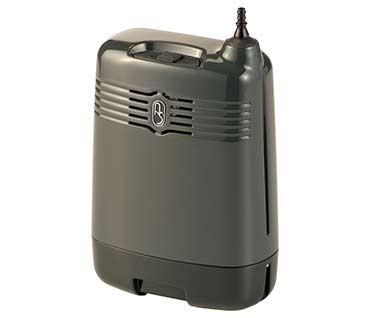
One of the major benefits of having such a lightweight device is that you can carry it any way you want. Put it in a backpack, carry it over your shoulder, or you can even attach it to a belt buckle! This is one of the reasons why the AirSep Focus is such a versatile device. In fact, many people forget they’re even wearing it as they go about their day.
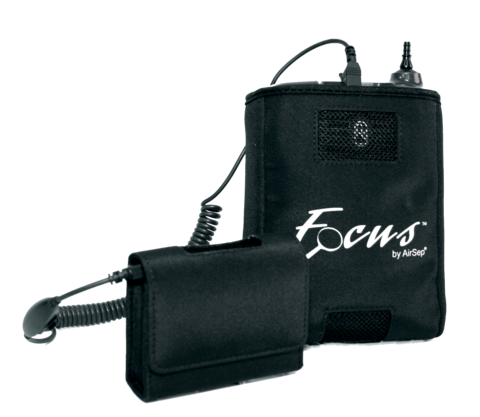
Despite how small and lightweight the AirSep Focus is, its battery life is nothing to joke about either. The micro battery that comes with the device can last up to 1.5 hours on one charge and the 8-cell battery sold separately offers up to 3.5 hours on one charge. In other words, you’ll just need to carry one or two extra batteries with you to make it through a full day whether you’re at work, going to visit a friend, or just going out for a walk.
3.) The Respironics SimplyGo
The Respironics SimplyGo is the only continuous flow portable oxygen concentrator on this list. What this means is that it puts out a constant stream of oxygen rather than only putting out oxygen when the user inhales. We tend to not recommend these types of units for most oxygen patients because they’re much heavier and bulkier than their pulse dose counterparts. However, the Respironics SimplyGo is an exception to that. While this oxygen machine is certainly bigger and heavier than the other concentrators on this list, it’s not heavy enough that you’ll need to wheel it around using a rolling cart.
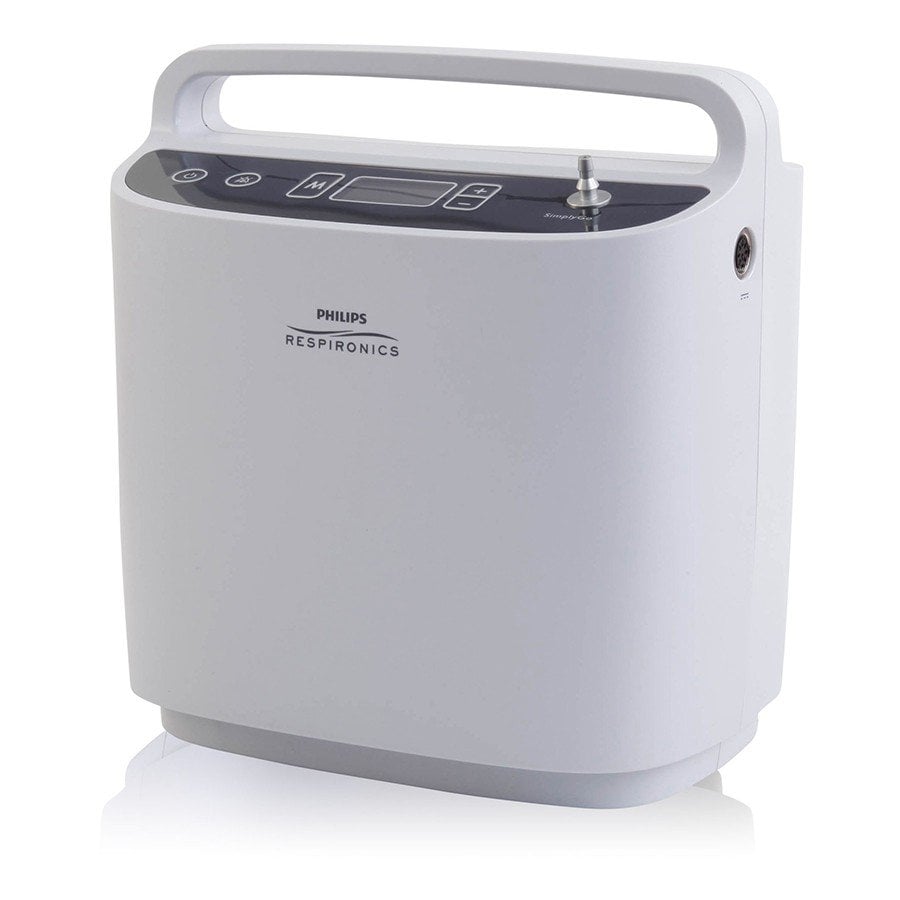
The first thing that you’ll likely notice about the SimplyGo is that it has a big carrying handle on the top of the unit. This is pretty unusual for an oxygen concentrator but it’s hard to deny the benefits that it offers. If you have to set your concentrator on the ground for one reason or another you can simply use the handle to pick it up again rather than straining your back to pick it up from the bottom.
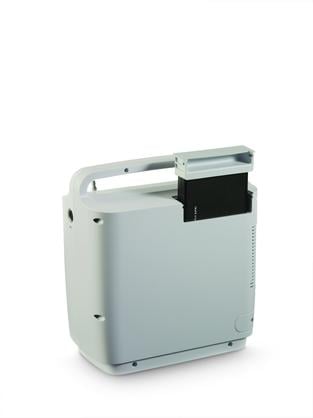
Another intuitive feature of the Respironics SimplyGo is its battery port. Instead of being located on the bottom of the unit like with most concentrators, the Respironics SimplyGo batteries are located on the top. This makes it incredibly easy to switch out your batteries on the fly because you don’t have to flip the device over in order to do it. Simply pull up on the handle and slide in the other battery.
2.) The Inogen One G5
The Inogen One G5 is the latest device in Inogen’s pulse dose line of concentrators. Within the past several decades, Inogen has become well-established as one of the top innovators in mobile oxygen devices. The Inogen One G3 was championed for its outstanding battery life, the Inogen One G4 was one of the lightest portable oxygen concentrators ever produced and the Inogen One G5 has been an all-around great concentrator since it was released in 2019. Despite the age of the G3 and G4, they’re still in use by thousands of people all around the world. This is a testament to the careful design choices that Inogen makes when putting out a new concentrator.
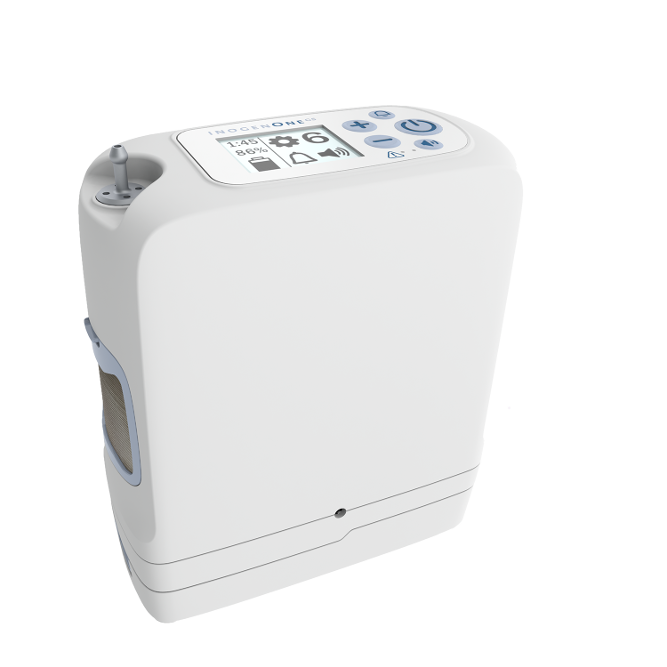
Inogen oxygen concentrators have never been difficult to use, but the G5 is likely their most streamlined unit thus far. The oxygen outlet port is located on the top of the device meaning it’s easy to access and it won’t get in your way as you’re walking. The user interface is also pretty simple with only five buttons: one to turn the power on and off, two for the flow settings, one to change the alarm settings, and one to adjust the volume. The screen displays your battery life, flow setting, and brightness settings.
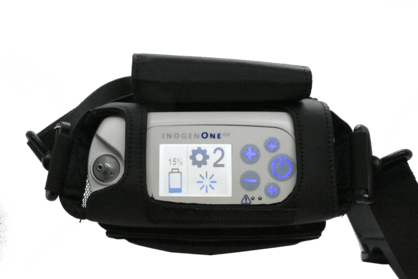
One of the best things about buying an Inogen oxygen machine is that you know there will be plenty of accessories to help you customize your experience — the G5 is no exception to that rule. Since the G5 is such a compact portable oxygen concentrator, this has opened the door for many sleek and comfortable carrying cases. The custom carrying case for example fits snugly over your oxygen device and doesn’t provide any unnecessary bells and whistles. Attached to it is a comfortable adjustable carrying strap and it has a mesh exterior that helps the device take in air properly.
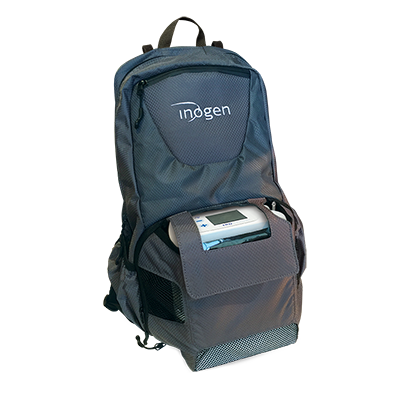
Another carrying accessory for the Inogen One G5 is the G5 backpack. This is like any other backpack but it has an extra pouch in the back to store your G5. Similar to the custom carrying case, the backpack was intuitively designed with a mesh material that helps your concentrator function properly. What’s more, it has an opening on the top where the oxygen nozzle is located so that you use your concentrator as you walk. The G5 backpack has plenty of extra space that you can use to store your personal belongings, so this carrying case is perfect for people who are on the move a lot.
1.) The Caire FreeStyle Comfort
The Caire FreeStyle Comfort is one of the newest portable oxygen concentrators on the market, and to many people, it’s the best. No other oxygen company has been able to match the reliability and convenience of the FreeStyle Comfort, and it’s all because the experts at Caire Inc. took the time and resources to ensure that their device is able to accommodate the lifestyles of oxygen patients around the world.
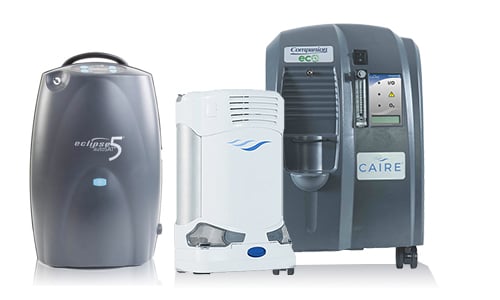
One of the intuitive design features of the Caire FreeStyle Comfort is its ergonomic curve. Unlike most portable oxygen concentrators that move around at a patient’s side due to their box-like shape, the Caire FreeStyle Comfort has a subtle curve built into it that reduces movement at your side as you’re walking. Another benefit of this design is that you’ll always know which way you should be wearing the device. You’ll never have to worry about taking the device off of your shoulder and readjusting it so you can read what’s on the screen.
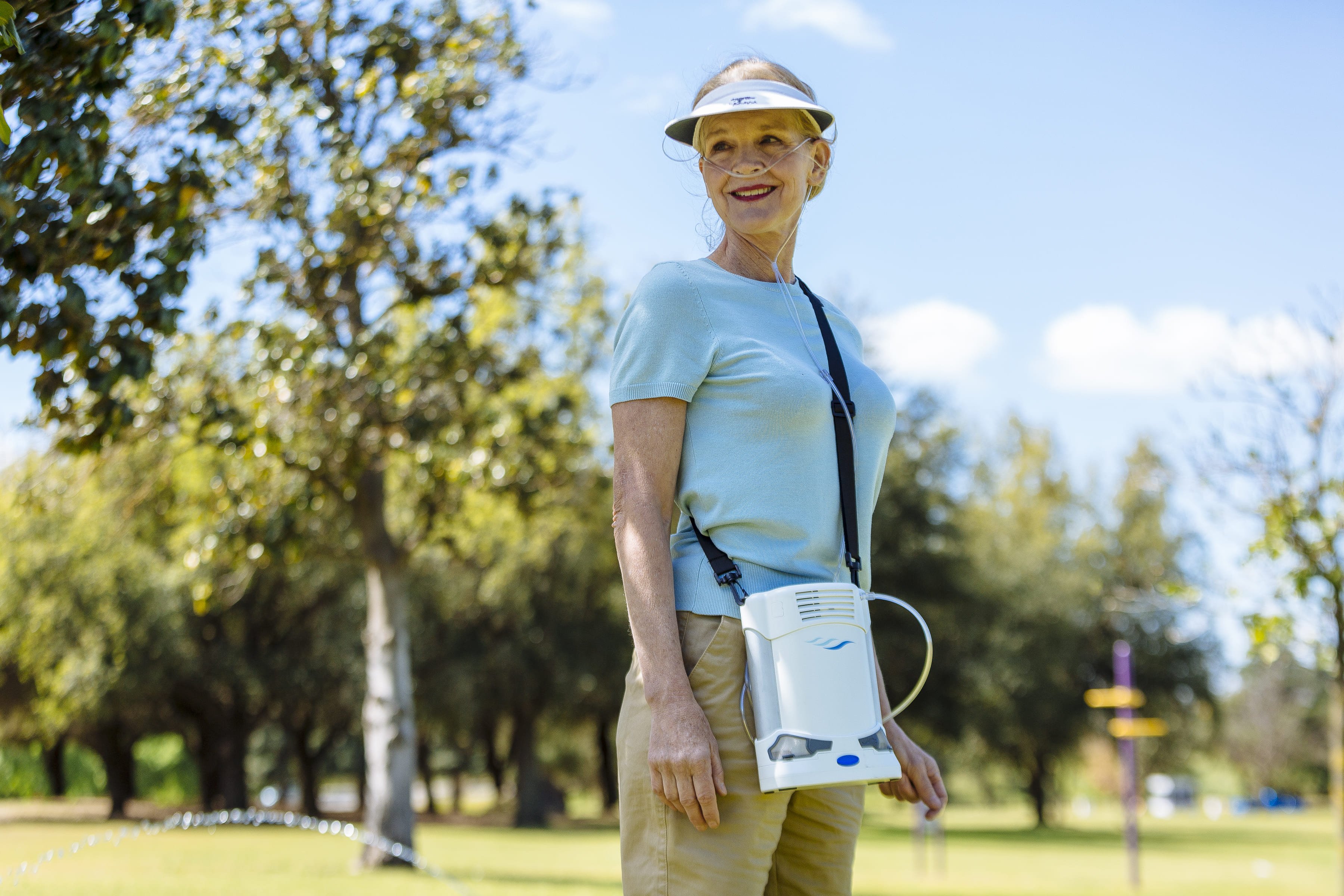
Another intuitive aspect of the FreeStyle Comfort is its user interface. This device keeps it as simple as possible in this regard with only three buttons: one to turn the device on and off and two to adjust the flow settings. The screen is also extremely streamlined and doesn’t provide you with tons of information that you don’t want or need. When you look at the screen you’ll simply see the battery life, battery life percentage, and flow rate — that’s it!
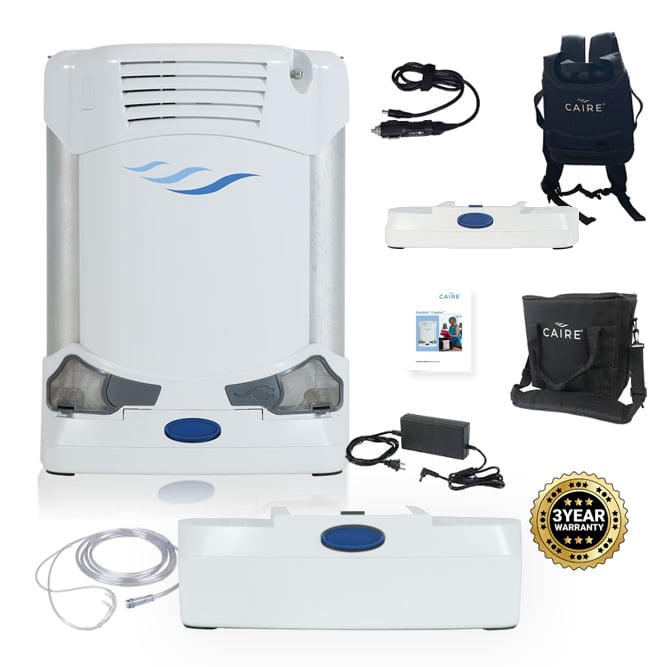
Replacing the batteries on your Caire FreeStyle Comfort is extremely easy and intuitive. On the front of the device, you’ll see a blue tab. Simply press the tab and pull downwards. What’s more, the particle filters are also on the front of the device and can easily be removed for weekly cleaning or whenever they get dirty. Generally speaking, many people prefer the design of the FreeStyle Comfort over other concentrators on the market because it looks sleek and only takes a few minutes to figure out how it works.
Conclusion
The way an electronic device works is incredibly important. Portable oxygen concentrators like the Caire FreeStyle Comfort and the Inogen One G5 are not only powerful and reliable but they’re designed to be easy to learn and easy to operate without the user having to constantly consult the user manual. While they both have some additional features like CAIREView and Inogen Connect, these applications are separate from the basic functions of the concentrator and you don’t need to use them in order for your device to work properly.
In this post, we highlighted just a few of the intuitive design choices made by some of the most trusted oxygen manufacturers in the industry. There’s a clear trend towards making portable oxygen concentrators more seamless in the day-to-day lives of oxygen patients, and it’s likely that many oxygen patients will begin to feel less stigma towards oxygen devices in the future as a result. If you’d like to learn more about the concentrators listed above, click the links to visit their respective pages. Otherwise, feel free to call us or email us to get connected with an oxygen specialist.
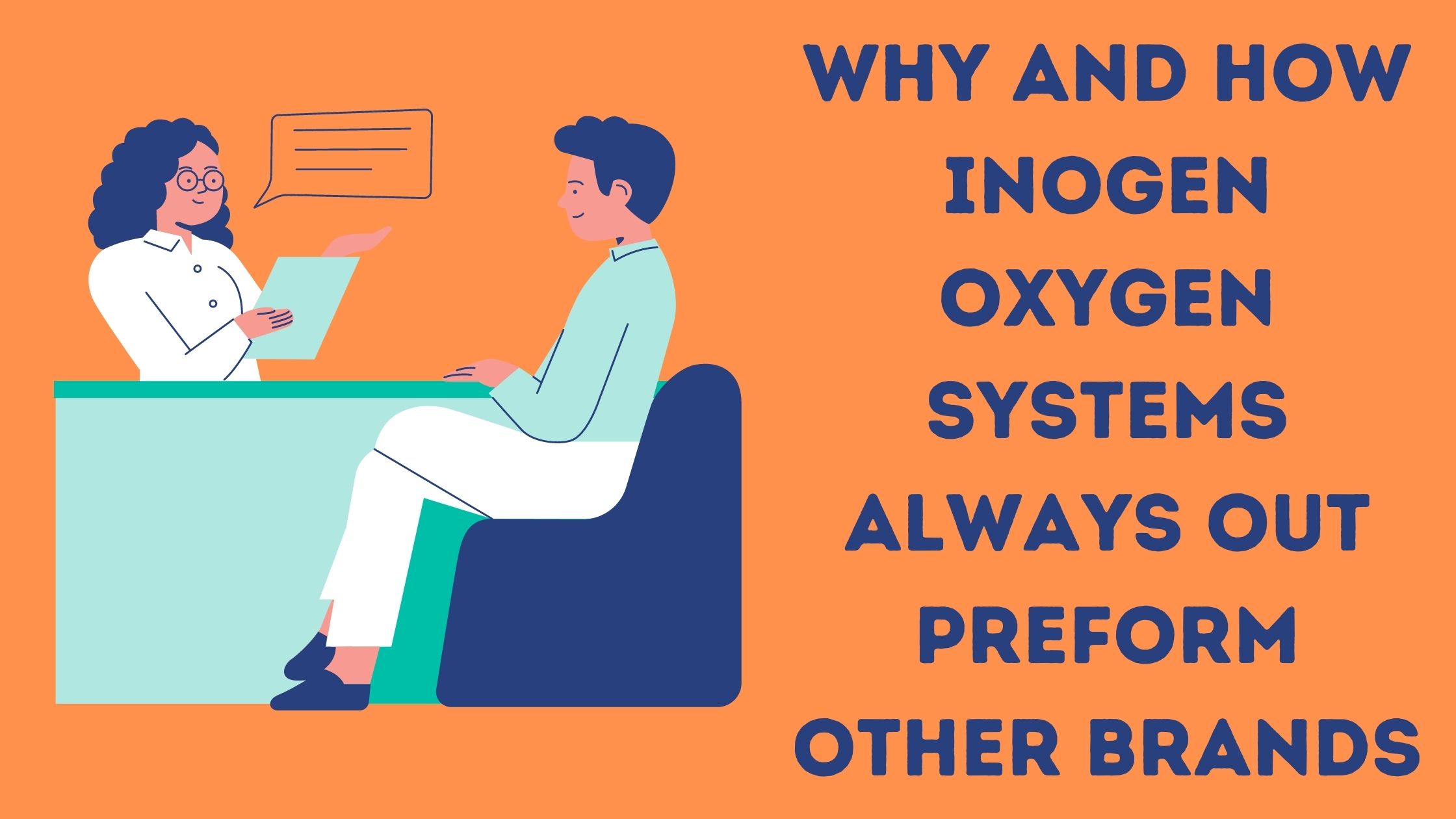
Oxygen therapy is a life saving therapy that helps oxygen patients around the world treat respiratory diseases like chronic obstructive pulmonary disease or COPD. Oxygen therapy is most commonly administered through nasal tubing called oxygen cannulas or with a face mask if you are using oxygen at night time while you sleep.
{{cta('fa8abc2a-1e88-4fa3-82fd-1cb5b9ed43b2','justifycenter')}}
There are many ways to treat COPD, but oxygen therapy is the only treatment that has been proven to prolong life in hypoxic patients.
If you use oxygen therapy you probably have a liquid oxygen tank, a gas oxygen tank, or a portable oxygen concentrator, all of these devices will supply you with oxygen, however a portable oxygen concentrator (POC) is the easiest-to-use solution for better breathing.
In this blog you will be able to compare different solutions for your oxygen therapy needs, and specifically how Inogen oxygen devices compare to other oxygen therapy devices.
How Inogen Oxygen Devices Work
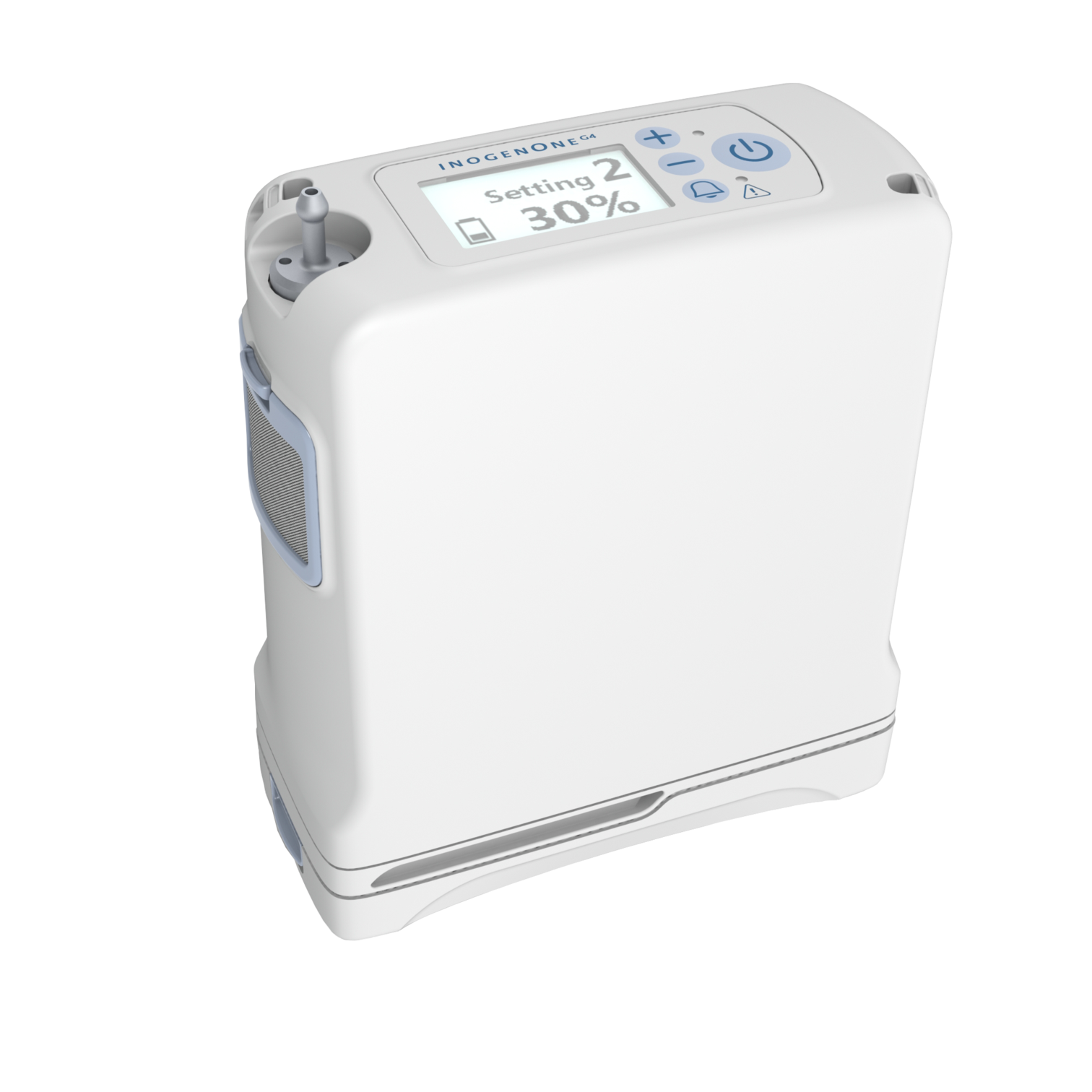
All oxygen devices push oxygen through tubing that connects to your nose so that you can breathe in the extra oxygen to treat the hypoxia caused by your disease. Portable oxygen concentrators operate very differently than an oxygen tank. Rather than getting your oxygen tank refiled every week, you simply charge the batteries.
Here is how Inogen systems work:
Purifies Air continuously
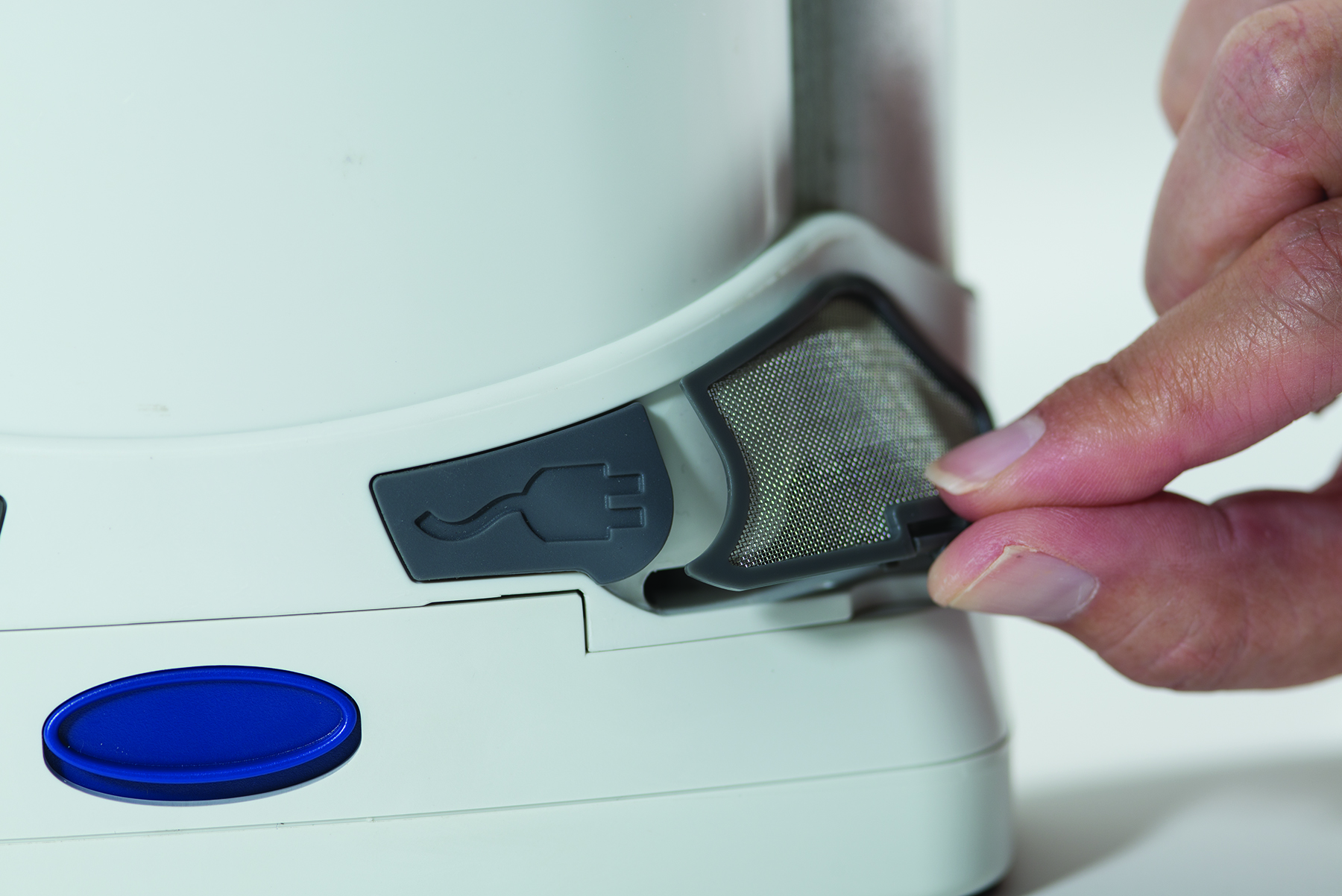
Similar to an air filter that you can leave in your home, your portable oxygen concentrator filters out impurities in the air before you breathe in the oxygen it is providing you. Inogen systems including the One G3, One G4, and One G5 all come with great filters that will extract particles from the air to ensure you are getting medical grade oxygen. Your filter should be replaced depending on how often you have to use your device, it is very easy to replace your own filter.
For example if you have the One G4, you can order a One G4 air filter, simply purchasing a new filter from LPT Medical, and calling 1(800)-946-1201.

By changing your filter when it becomes misshapen or when the screen is damaged the filters keep dust, pet hair, and other air-borne contaminants out of your oxygen.
The Inogen filters are washable and reusable so you don't have to continuously buy new ones. The best practice is to wash and dry your filters weekly, and if you use your device more often in very dusty environments, you can even clean it twice a week to help keep your concentrator working properly.
Removes Nitrogen to Deliver Oxygen-Rich Air
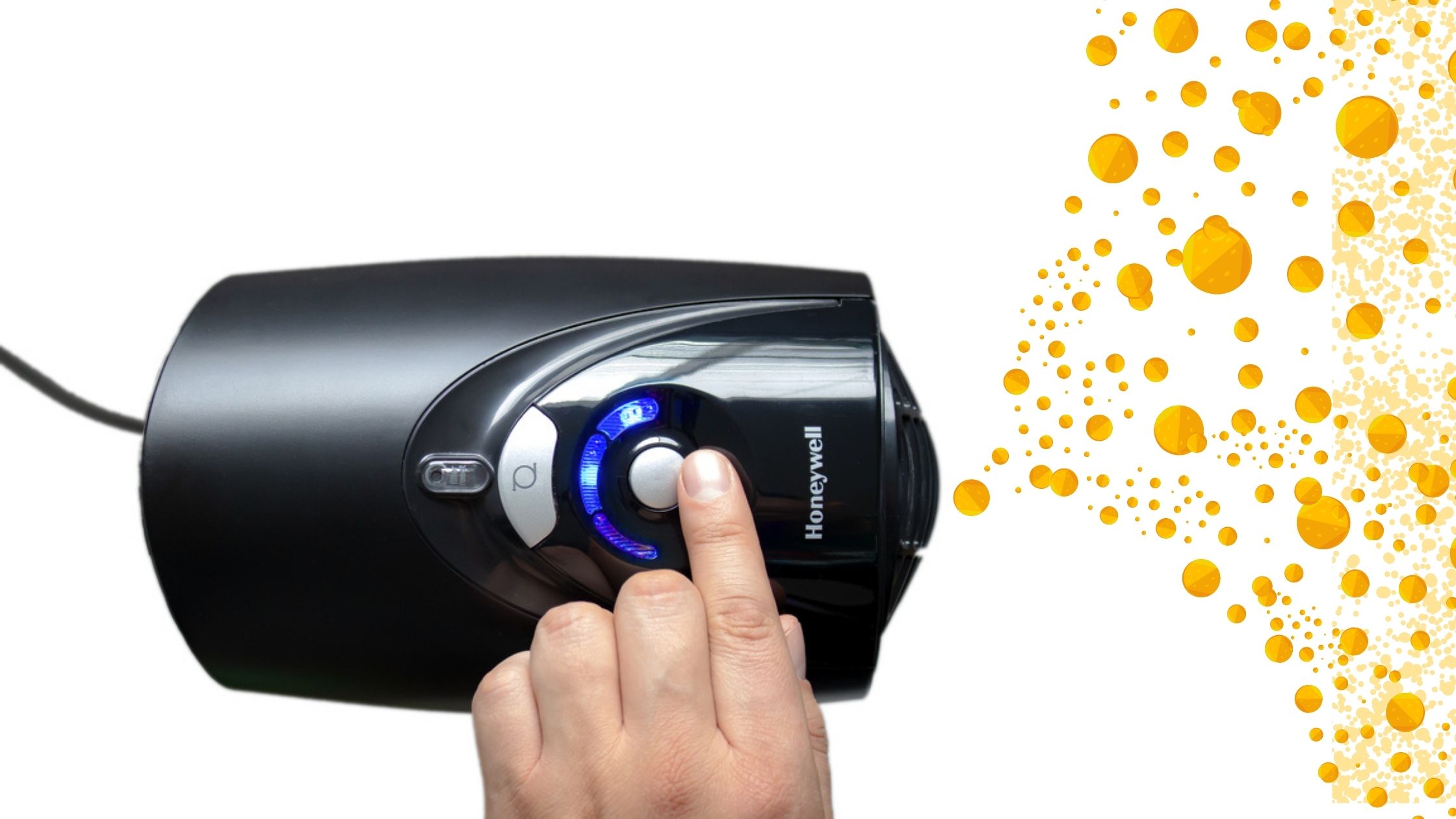
The air surrounding you that you breathe everyday is made up of 80% nitrogen and 20% oxygen. This level of nitrogen is not an issue for healthy people who have normal levels of oxygen in their blood. With your low levels of oxygen in your blood you will struggle with converting the nitrogen filled air into the pure oxygen your body needs.
This is why it is important for your oxygen device to take regular air and purify it to be 90-95% oxygen, with limited amounts of nitrogen.
{{cta('43b79c5e-6bd6-4f02-ac27-2d038d20c146','justifycenter')}}
To remove nitrogen from the oxygen you breathe you inogen oxygen concentrators goes through these three steps:
- Uses a compressor that moves air into sieve bed filters to remove the nitrogen
- Distributes the purified oxygen through hoses inserted into the nostrils
- The nitrogen is later released back into the air
Delivers Purified Oxygen Via Nasal Cannula
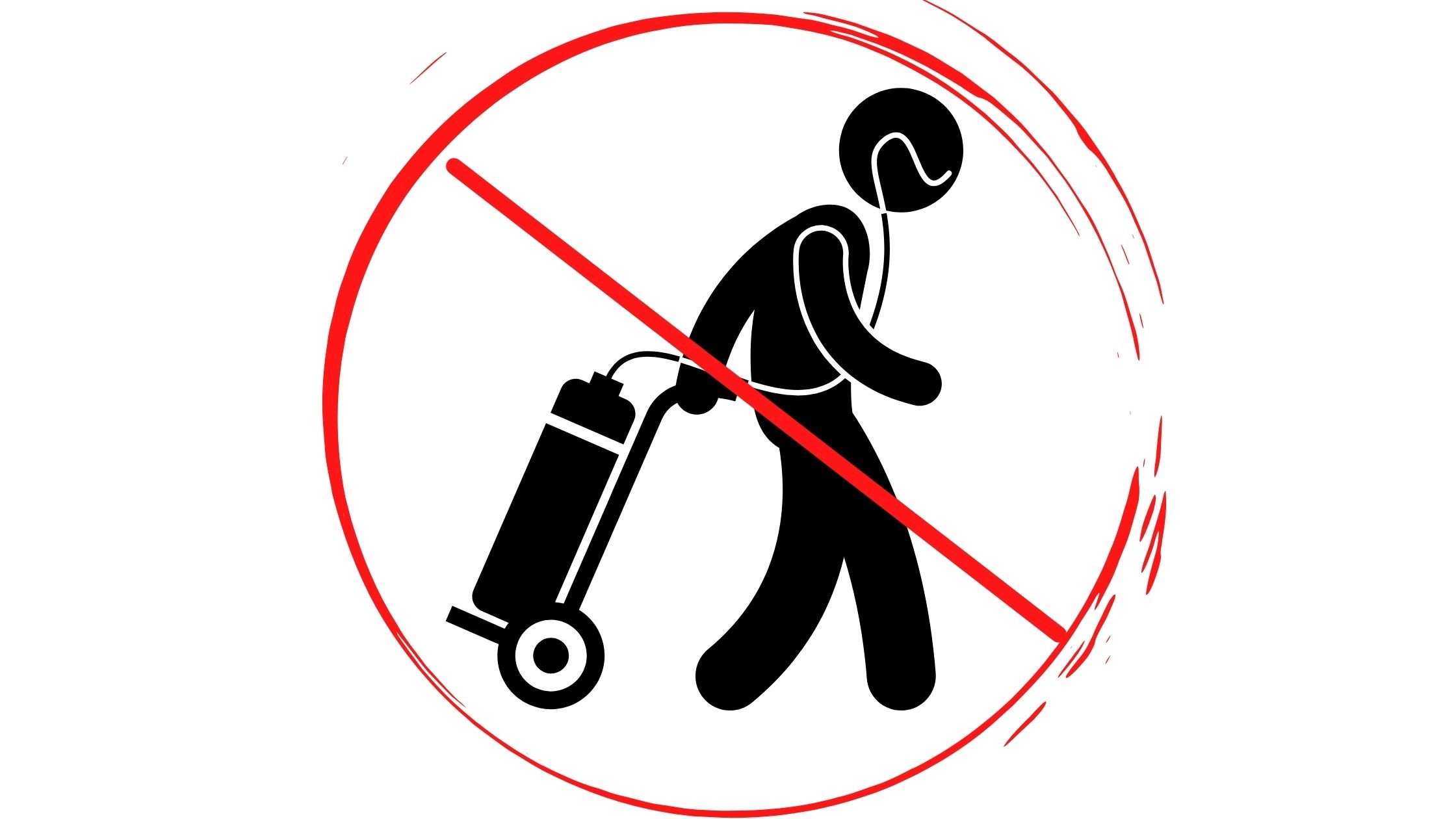

The nasal cannula is tubing that is attached to the oxygen device, and wraps around your head and the tubes are inserted into your nose. It is essentially a thin, plastic tube that has two small prongs at one end that rest in your nostrils.
The nasal cannula can comfortably deliver oxygen to a you at a setting of one to six liters per minute (LPM), but if you are breathing through your mouth it is possible you are not getting enough oxygen.
A study by PubMed concluded that, while mouth breathing doesn't always result in hypoxia, it can contribute to it.
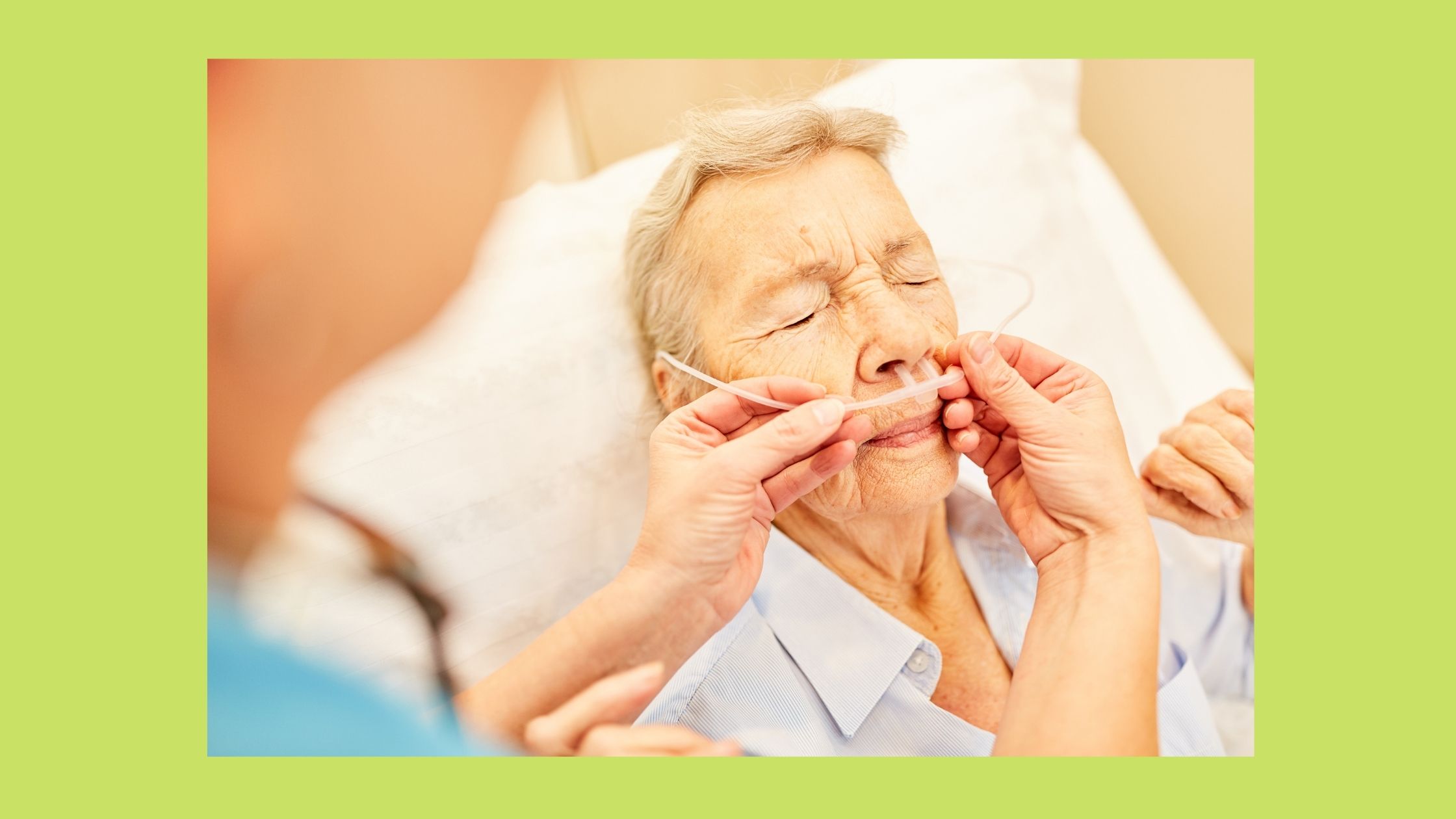
If you are a mouth breather and need supplemental oxygen it could be very beneficial to learn how to breathe through your nose.
Mouth Breathing with Oxygen Therapy
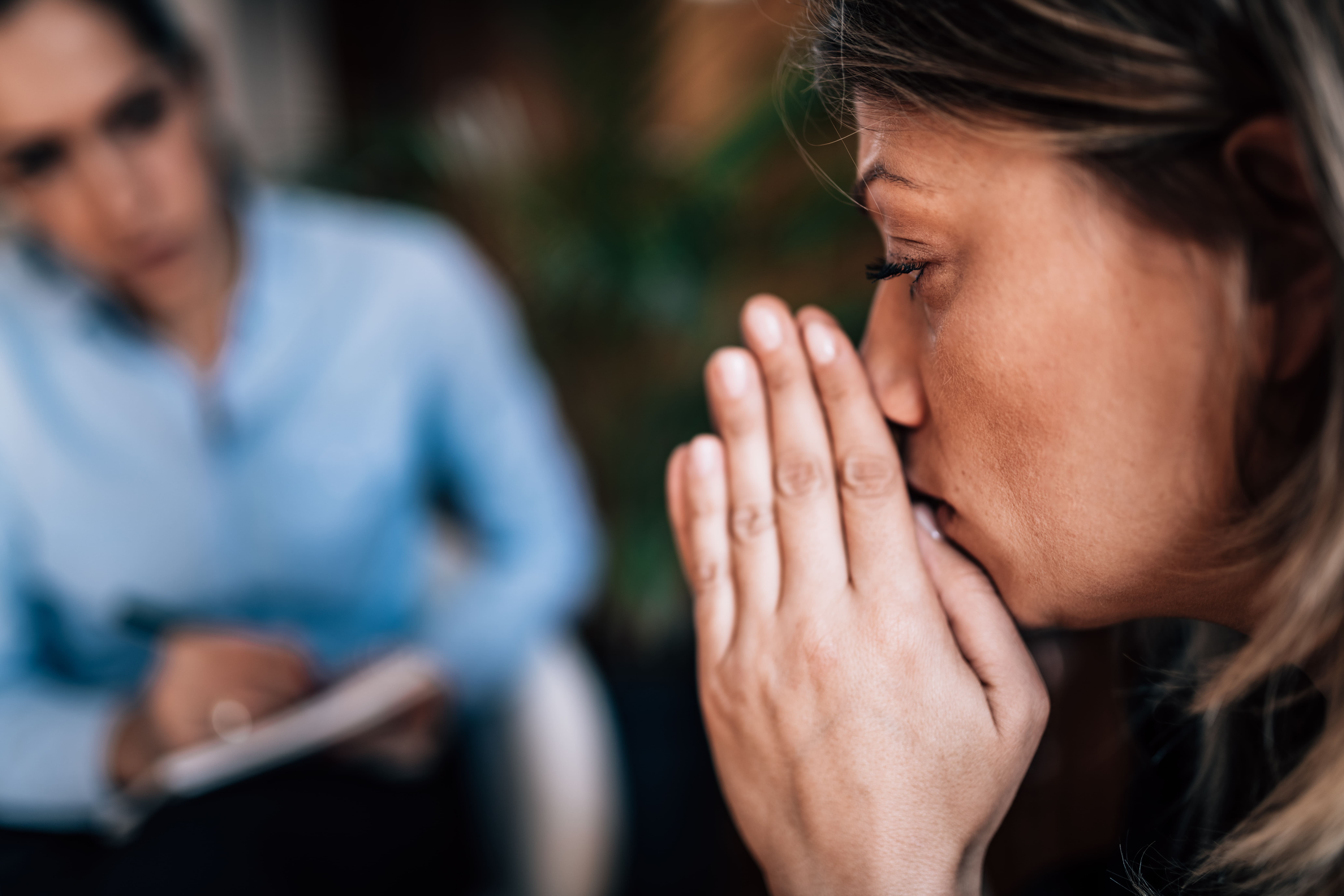
To address your mouth breathing, first try to figure out the cause, and what exactly is making you breath out of your mouth rather than your nose. Once you have accurately diagnosed this, you can address the treatment options which may include the following:
Clear Your Nasal Passages
You could be breathing through your mouth because your nasal passages are blocked. A stuffy nose could be attributed to seasonal allergies, illness, prior trauma, or even weather changes.
Over-the-counter antihistamines are available to reduce your allergy and cold symptoms and for a brief time, and open up your clogged nasal passages.
Saline nasal spray is another option you have to lubricate your nasal passages and relieve congestion.
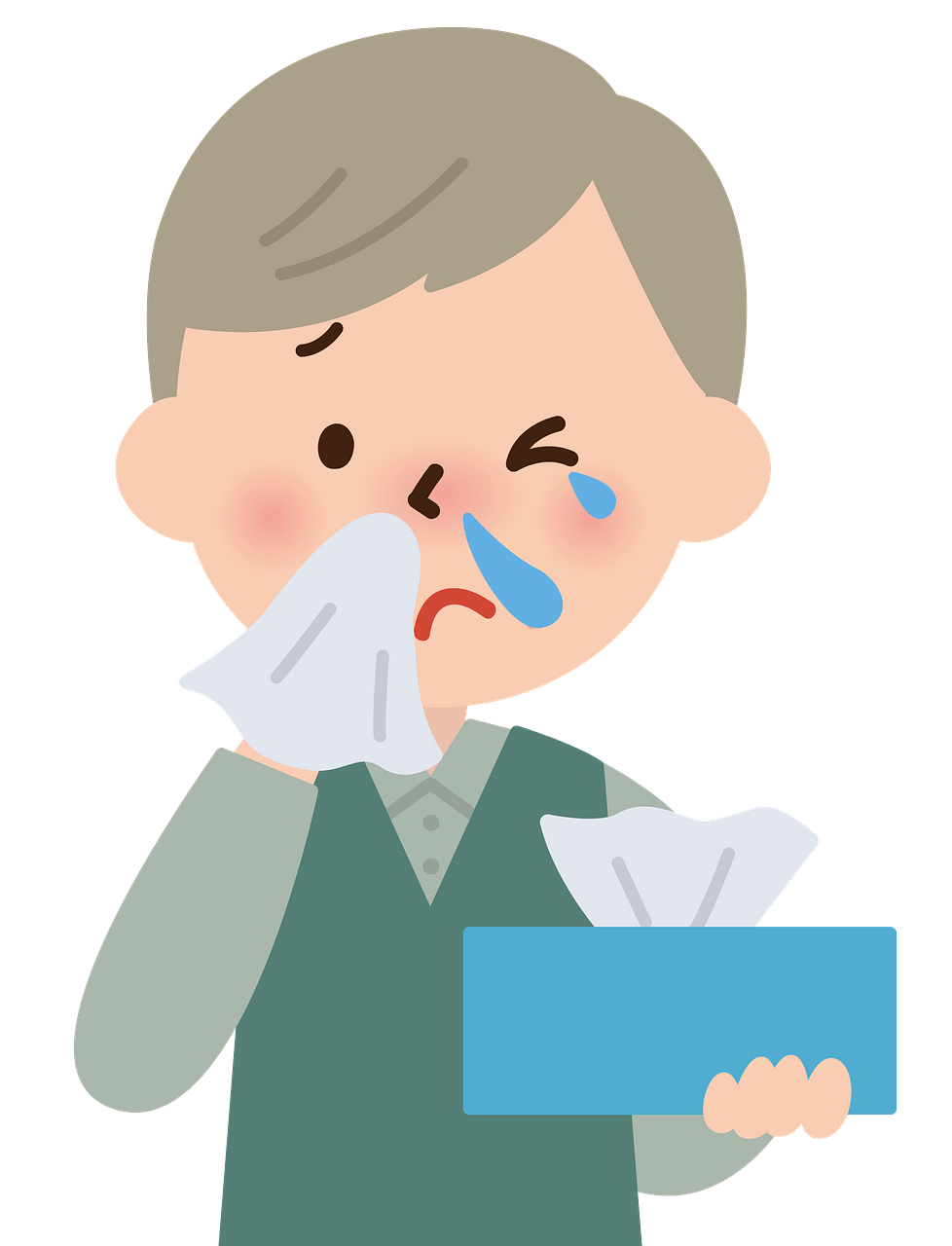
Go to the Dentist
Dentists can sometimes offer you more insight into why you are mouth breathing. It could be that a facial or dental abnormality is the cause of your mouth breathing and in this case they may fit you with a functional device to help correct the problem.
Switch from a Nasal Cannula to a Face Mask
The easiest solution to getting enough supplemental oxygen as a mouth breather, if deemed medically appropriate, is to switch to a face mask. Unfortunately, this is much more invasive for many people and must first be approved by your oxygen-prescribing healthcare provider.
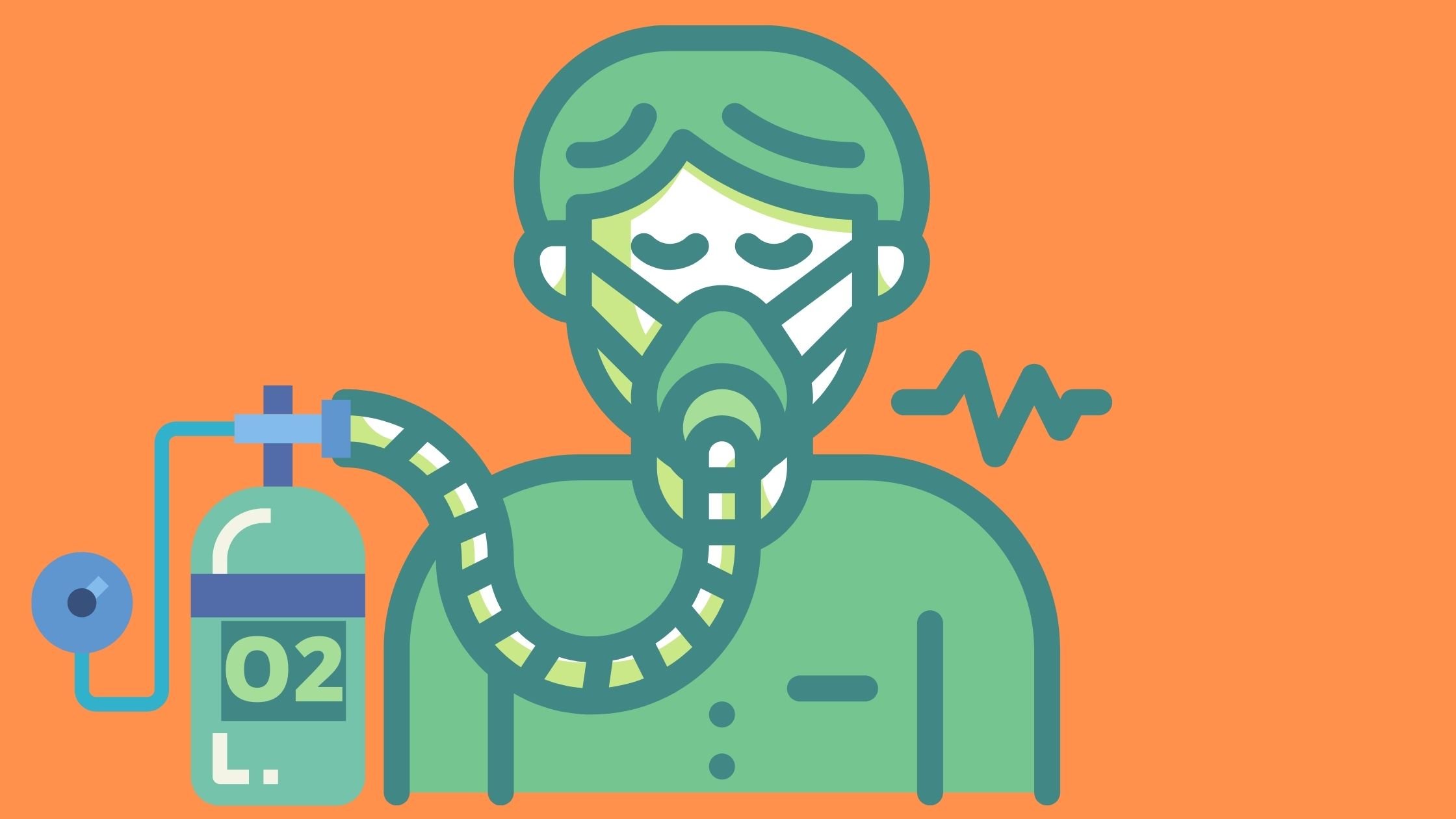
Another option is to consider using the nasal cannula during the day while you are out doing things, and switching to a mouth covering face mask at night. This way you are getting the full benefit of oxygen therapy while you are asleep.
Talk to your doctor about these alternatives to the nasal cannula.
Nasal Surgery
If you have a deviated septum your nasal passages are blocked all the time and you should consider talking to an Ear, Nose, and Throat (ENT) specialist about the surgery that may help correct the problem and allow you to breathe better.
Remember anesthesia can cause postoperative complications if you have COPD, so be aware of these risks before undergoing surgery.
Pulse Oximetry for Those on Supplemental Oxygen
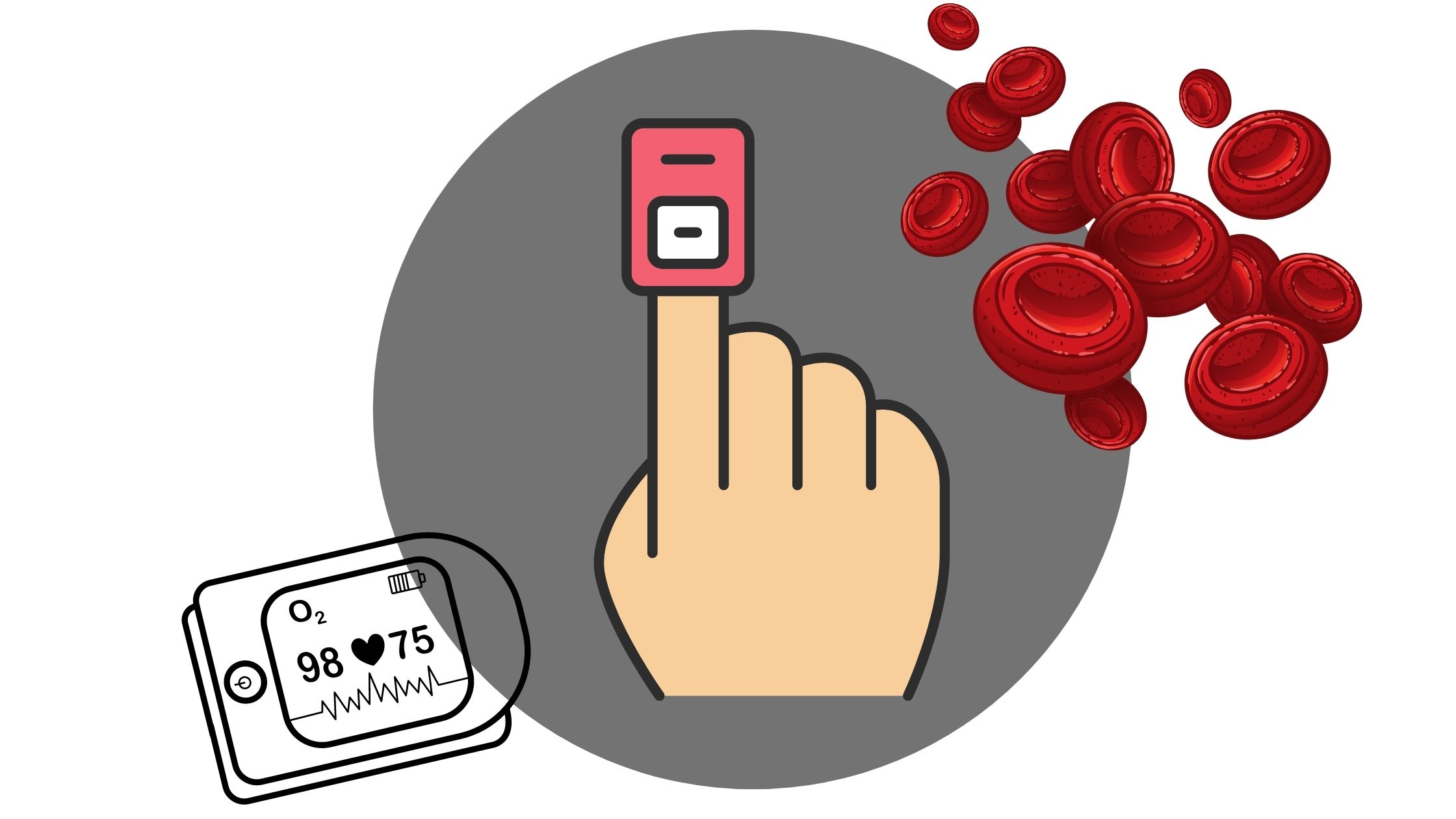
Despite your oxygen therapy method or device, having a pulse oximetry monitor is essential for anyone who receives oxygen therapy. Pulse oximeters can detect rapid changes in your oxygen saturation levels so that you are warned that you're low on oxygen. Knowing your oxygen saturation levels is a huge benefit and helps you treat you disease to the best of your ability
Powered by Rechargeable Battery and any AC or DC Power Source
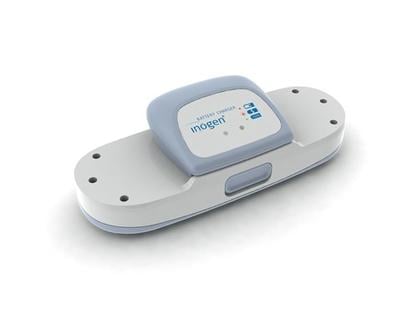
The most notable difference between traditional oxygen tanks and Inogen brand devices is how Inogen oxygen systems are all powered by rechargeable lithium ion batteries.
Having an oxygen device that will never run low on oxygen means a number of things. First, you will never wait around for your oxygen to be delivered, nor will you have to worry about paying for your new oxygen tanks every week.
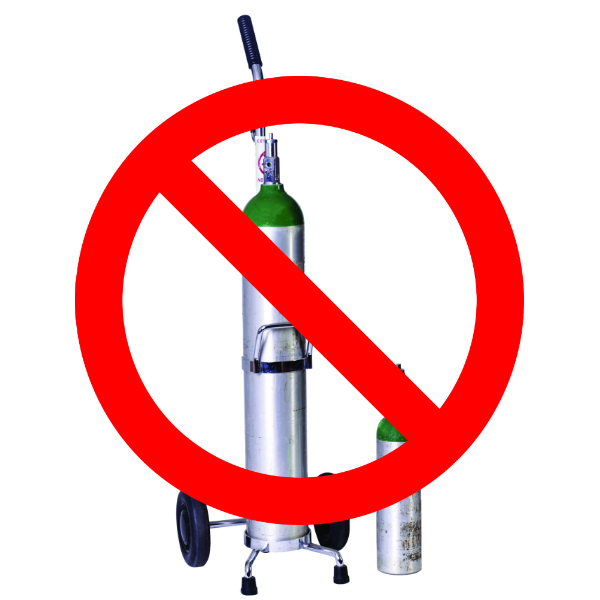
Instead, you can recharge your battery day or night, while you are using your device, in the car or on the move with an external battery charger.
You have the option to go with the smaller 8-cell battery or buy a larger 16 cell battery when you order an Inogen One G3 One G4, or One G5. The 16-cell battery lasts longer, and it is just slightly heavier.
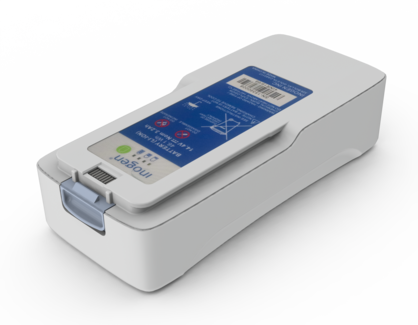
The 8-cell battery is no additional cost and comes with the purchase of any Inogen oxygen concentrator when you purchase from LPT Medical at 1(800)-946-1201!
With a battery powered device you have the ability to take your oxygen system on a plane with you and travel to your destination stress free. You will no longer have to rent oxygen and spend valuable time and money finding a palace to rent oxygen while you are away from home.
Read our blog about traveling with your supplemental oxygen in 2021.

Out of all of the Inogen systems, our best selling device is the Inogen One G5, and here is why:
Inogen One G5

The Inogen One G5, is the most advanced Inogen system so far, it has six pulse flow settings— The amount of oxygen the One G5 can administer while maintaining the compact and lightweight design in comparison to the earlier generations is outstanding. This extra level of oxygen output gives more people who use oxygen therapy the ability to take advantage of lightweight portable oxygen devices.
If you have a lower flow of oxygen you may not see this as an immediate benefit, however having the option to increase your oxygen output is always better. As ailments worsen or your condition progresses, you may need to increase your oxygen output.
For example, if you have a chronic lung condition like COPD your prescription may be suited to a three-level flow setting, but your need for oxygenation could increase to a six while exercising, or in the case of an emergency while you are experiencing a COPD exacerbation.
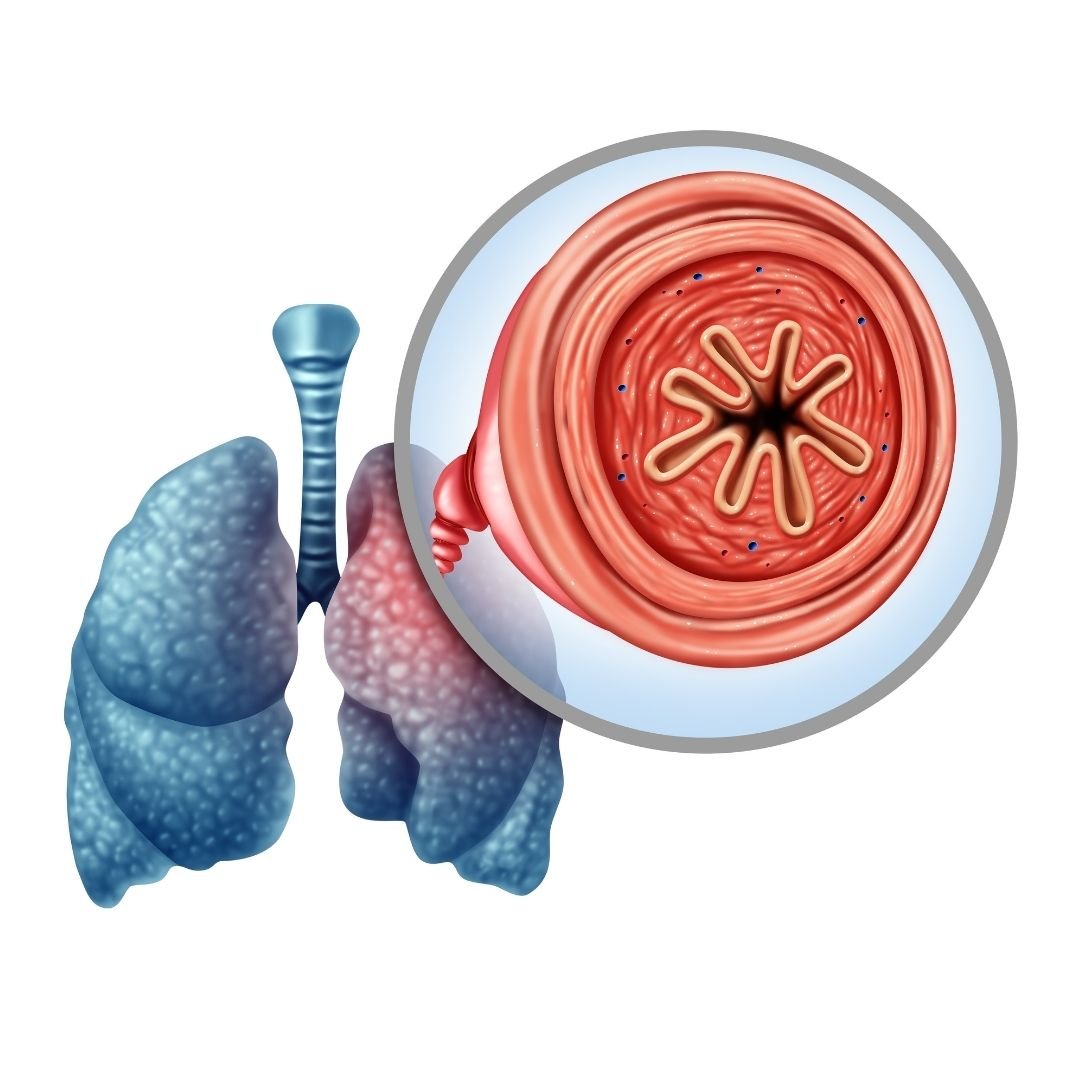
One common issue you might have with oxygen concentrators in the past is their noise, which can be loud enough to impact a good night’s sleep. However, Inogen has improved upon their previous models, and the One G5 is only 38 decibels while on a level two setting, which is quieter than other Inogen One units.
38 decibels is rated as a soft sound, and typically it will not impede on your day-to-day activities, and it may just help you sleep a little better.
The One G5 unit weighs less than five pounds, which for some people may actually be too heavy to carry around all day, and that is why it comes with a One G5 custom carrying case, and you have the option to buy a One G5 backpack. The backpack can hold extra items when you are out running errands or playing a round of golf!
The One G5 also offers an amazing battery; you’ll have the option to get an 8-cell battery or a 16-cell battery. With the 16-cell battery on a setting 3 you will have power in your device for 7 hours! It is not only a great portable unit to carry around all day but it is also Federal Aviation Administration (FAA) approved meaning that it’s an excellent option if you are eager to travel.
Overview
It is clear why Inogen oxygen devices are so popular, they work well and for many different kinds of oxygen patients, but they are also durable and last a long time.
If you are interested in learning which generation of Inogen One concentrators will work better for you and within your budget, give LPT Medical a call, and our respiratory specialists will help you, and work with your doctor to find the right oxygen device for you.
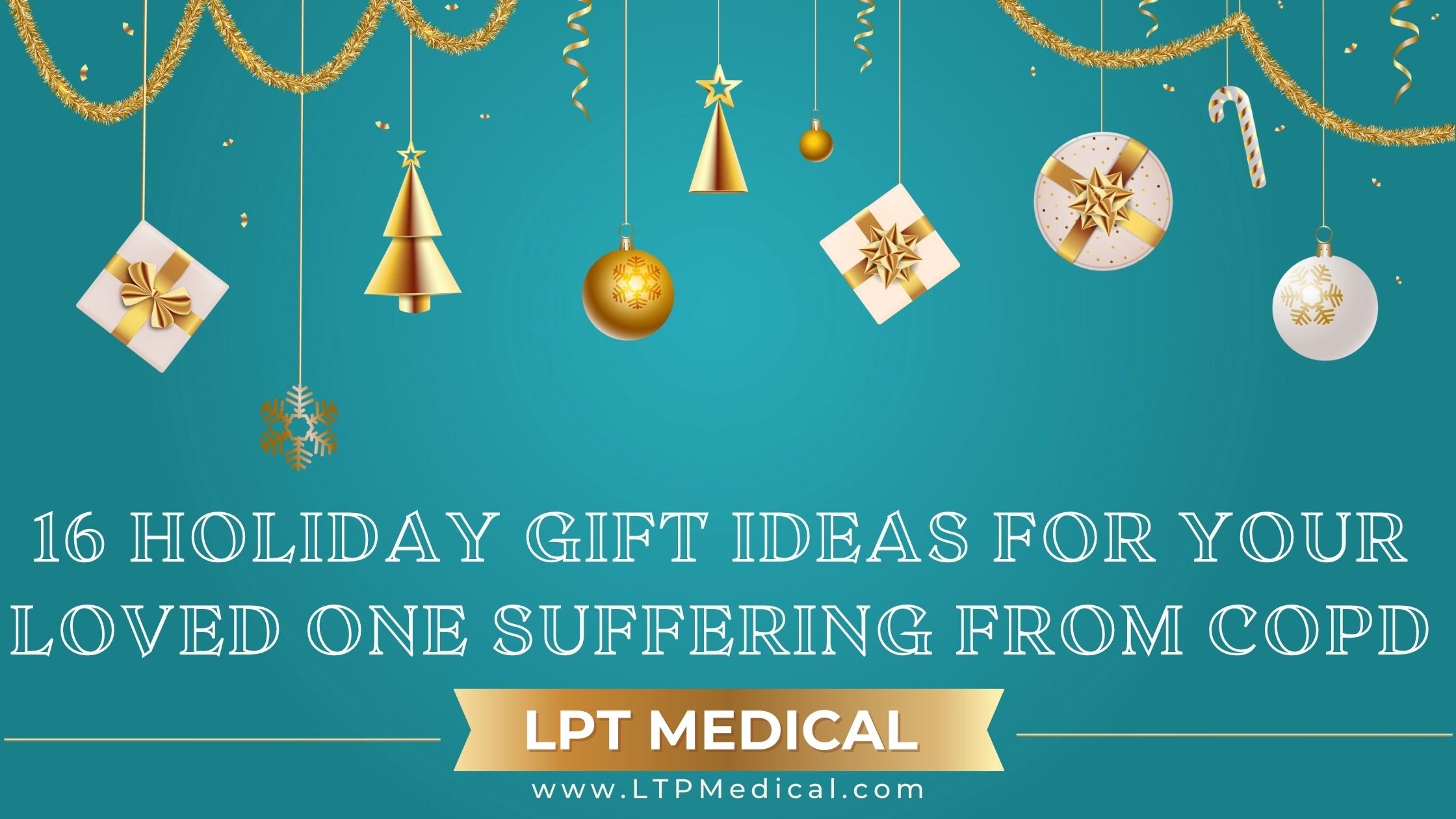
The holidays and shopping for friends or family with COPD can be difficult. But you know what's more difficult? Living with COPD every day of the year, and especially in the cold winter months!
Gifts can bring a lot of joy to the holiday, but special gifts picked out specifically for your loved ones with chronic respiratory diseases can bring joy that lasts throughout the year! Below are 16 practical Christmas gift ideas that COPD patients may find useful!
{{cta('fa8abc2a-1e88-4fa3-82fd-1cb5b9ed43b2','justifycenter')}}
So, while the gifts laid out in this article are practical and very useful for COPD patients, always remember that COPD patients may want something lighthearted, fun, that brings an element of the holiday spirit.
Exercise Bike
Exercise is an essential part of treating COPD. Exercise gives COPD patients hope for rebuilding strength and enjoying a fuller, more active life.

Pulmonary rehabilitation programs typically combine education, exercise training, nutrition advice and counseling, but for some people pulmonary rehab classes are not an option!
An exercise bike is a great option for low impact exercise that you can do from the comfort of your own home.
Nothing is more important to the person who has COPD than exercise. Exercise ultimately makes it easier for those with COPD to breathe by strengthening muscles, bones, and lungs.
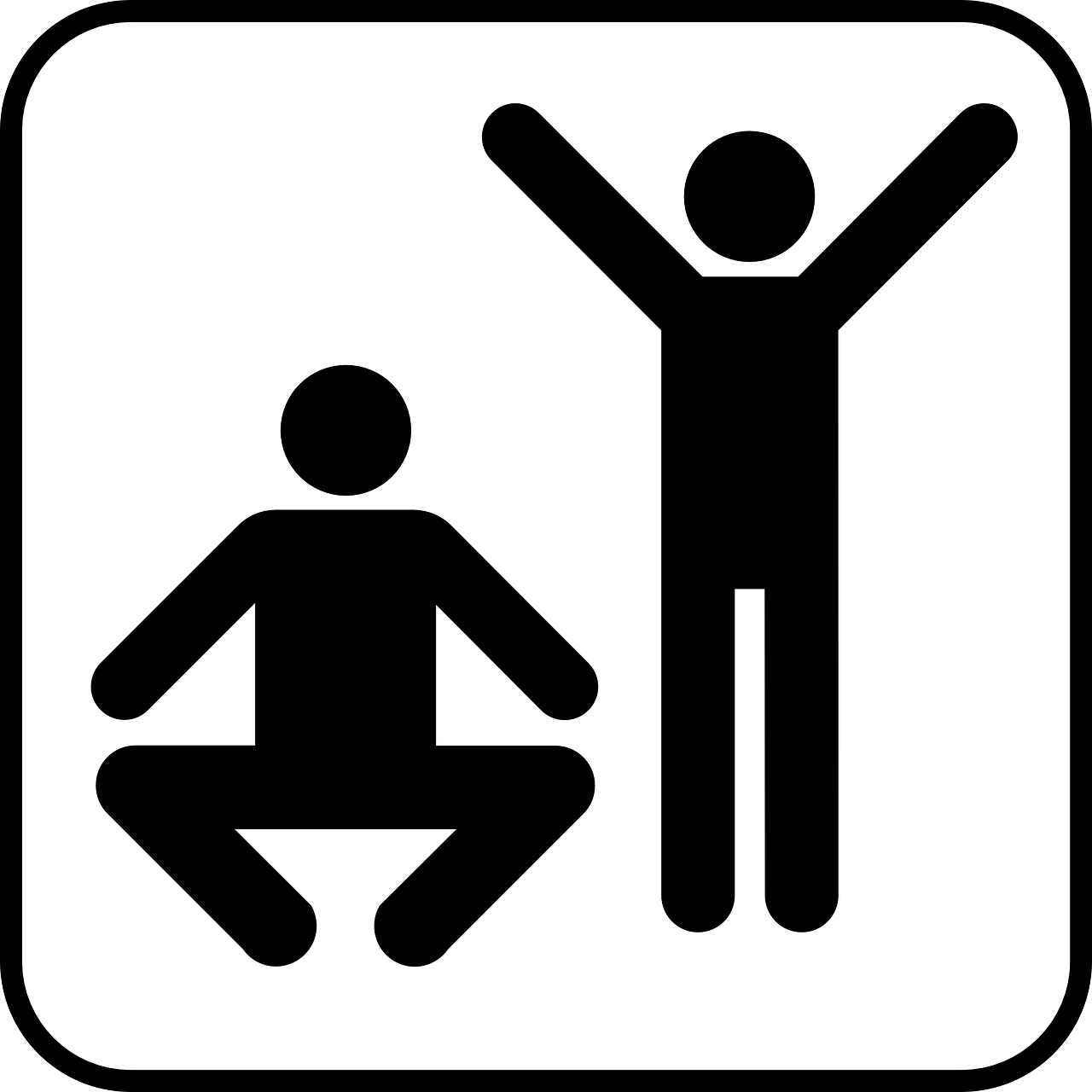
An exercise bike is something that will be valued by your loved one for years to come.
A tip for purchasing an exercise bike for a loved one is to choose a model that has several levels of resistance and a smooth magnetic resistance system so it can meet any COPD patient's needs.
Hat, Scarf and Glove Set

The cold winter months are a challenging time of year for COPD patients who already struggle to get around.
Staying warm is especially important for someone with COP. Breathing in cold air can ignite a bronchospasm and shortness of breath, causing a nasty flare up.
![]()
A scarf, hat and glove set will help your loved ones stay warm when they go outside and reduce the likelihood of them experiencing an exacerbation due to the cold air.
There are face masks designed for people with COPD that you can also buy. They are less fashionable, but offer a ventilation system that warms and moisturizes the cold dry air they are breathing in while outside!
Oxygen Therapy Gifts

If you are looking for a gift for a love one who uses oxygen therapy here are some ideas:
A New Pulse Flow or Continuous Flow Portable Oxygen Device
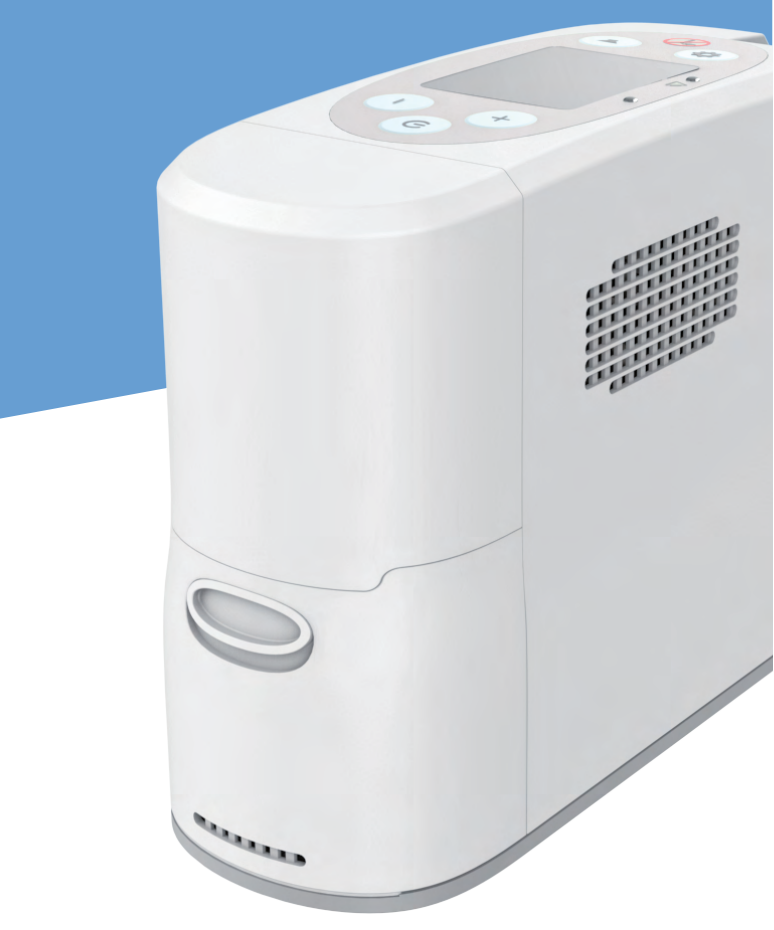
Pulse flow options:
Caire Freestyle Comfort
The Caire Freestyle Comfort is a pulse flow portable oxygen concentrator capable of delivering medical grade oxygen to COPD patients via face or nose cannula.
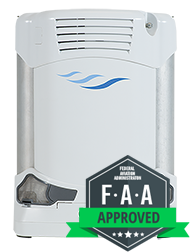
When you order the Freestyle Comfort from LPT Medical you are not only getting the portable oxygen concentrator, it will come with some additional accessories that will help your loved one make the most out of their oxygen therapy device, as well as a 3-year warranty!
Portable oxygen concentrators run off battery power, and the Caire FreeStyle comes with the 8-cell Lithium-Ion rechargeable battery. If you want a more powerful battery, you have the option to get the large Caire FreeStyle 16-cell battery.

You will also get an AC adapter and the DC car adapter, which allows you to charge your device in a traditional wall outlet, or in the car using the cigarette lighter.
If you want another way to charge your device, you can purchase the Caire Freestyle external battery charger separately. With the external charger, you can keep your batteries charged no matter where you are in the world.
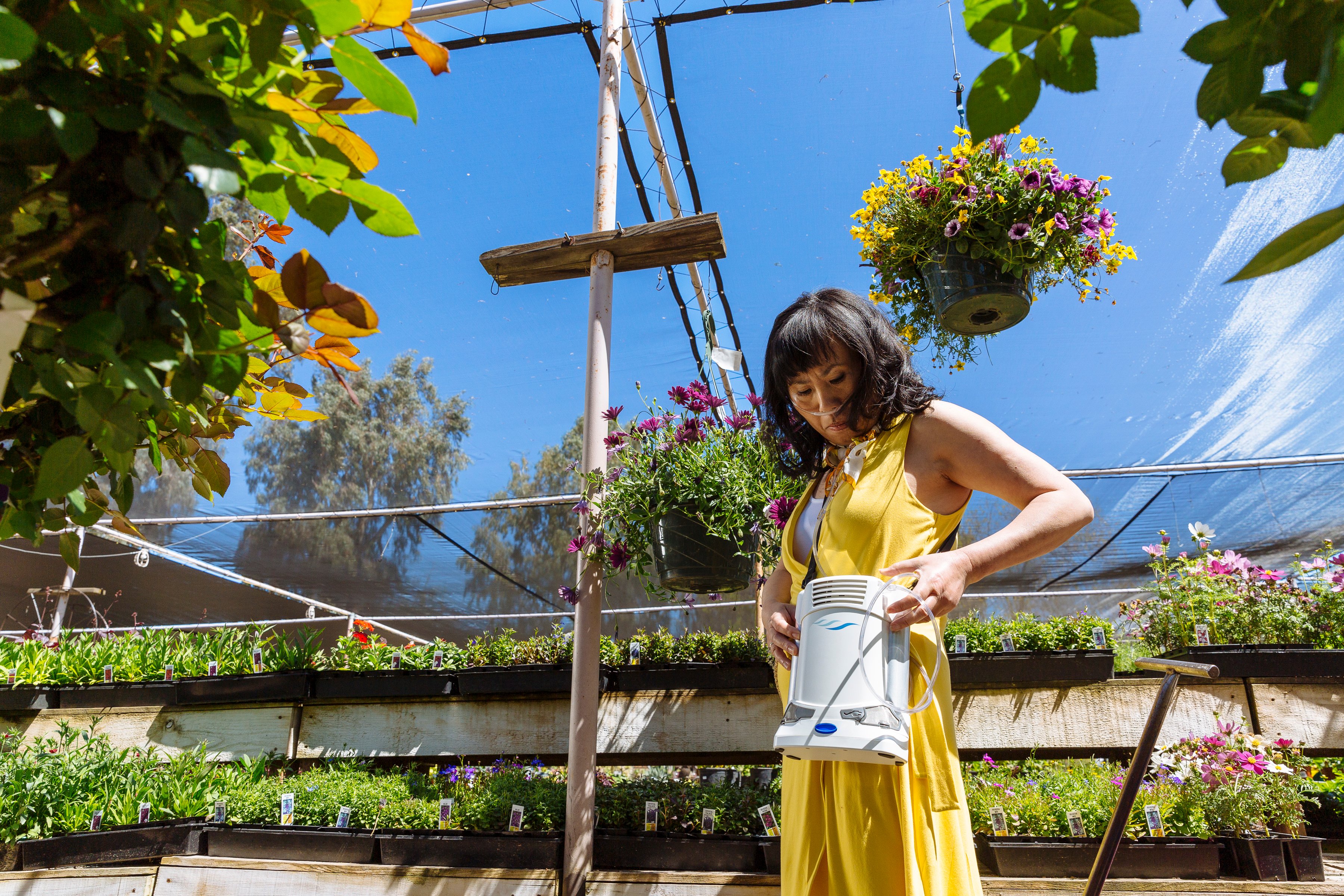
When you buy a Caire FreeStyle Comfort, you will also receive the Caire FreeStyle custom carrying case that comes with a convenient shoulder strap. You can also opt for another carrying method with the Caire Freestyle comfort backpack, this way you have several options to choose from when you carry your device with you.
With the purchase of the Caire FreeStyle Comfort, you will receive:
- 8-Cell Battery
- AC Charging Cable
- DC Charging Cable
- Caire Freestyle Custom Carrying Case
- Tubing
- Filter
- Manual
- 3 year-long warranty
Lifestyle P2
The Lifestyle P2 from Rhythm is one of the smallest and lightest units on the market. At 4.37 pounds, it offers pulse settings 1-5 and gets up to 5 hours of battery life.
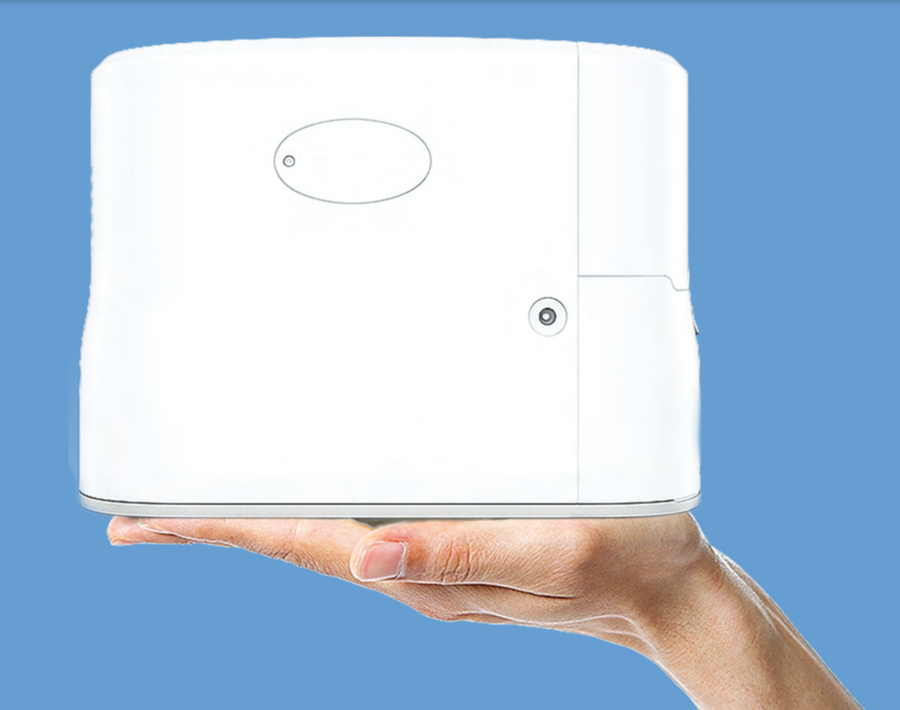
Rhythm products, specifically their Lifestyle P2 portable oxygen concentrator, is not only built to keep oxygen users safe, comfortable, and independent, it is also a source of guidance and education.
Lifestyle Mobility Aids exists with a simple mission— to take care of people with medical needs, including those with respiratory issues that need supplemental oxygen to survive.
What Comes With the P2 Rhythm Portable Oxygen Concentrator?
- P2 Rhythm Portable Oxygen Concentrator
- AC Power Supply
- DC Power Supply
- Rechargeable Battery
- Protective Carrying Case
- Shoulder Strap
- Tubing
- Filter
- Manual
- 3 year Warranty
Inogen One G5
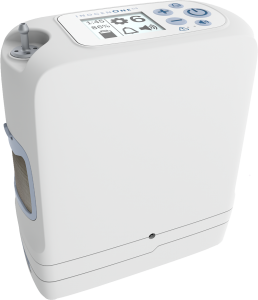
Medical oxygen tanks can be restrictive and oftentimes people sacrifice their freedom to hang out with friends or visit with family on your terms due to their oxygen device.
Help your loved one get back to doing what they love, ditch those cumbersome oxygen tanks and order the brand new Inogen One G5 portable oxygen concentrator.
Instead of worrying about refilling your oxygen tanks, the Inogen One G5 restores your mobility thanks to its portable delivery of pulse flow settings of 1-6, which is powered by a rechargeable lithium-ion battery.
Plus, if you’re familiar with the Inogen family of medical oxygen concentrators, the Inogen One G3 offers incredible battery life in combination with a compact and lightweight design. Well, the Inogen One G5 portable oxygen concentrator is lighter and offers a longer battery life than the Inogen One G3.
What Comes With Your Inogen One G5:
- Inogen One G5 Portable Oxygen Concentrator
- Single Battery
- AC Power Supply
- DC Power Supply
- Custom Carrying Case
- Shoulder Strap
- Tubing
- Manual
- 3 Year Warranty
Continuous flow options:
Respironics SimplyGo
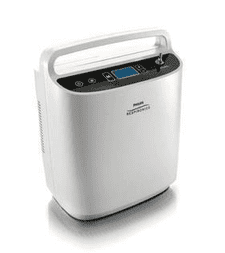
Philips Respironics broke the stereotypical design for continuous flow portable oxygen concentrators when they released the Respironics SimplyGo.
Ever since it was released it has been one of the top continuous flow units on the market! However, its small size isn’t the only reason it’s been one of the top units on the market. Backed by one of the biggest names in the respiratory field, the SimplyGo is as reliable as they come!
If you are looking for a lightweight portable continuous follow device to gift your loved one for the holiday call 1+(800)-946-1201!
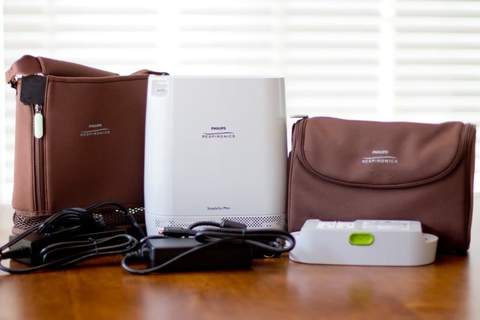
What Comes With Your SimplyGo?
- Respironics SimplyGo Portable Oxygen Concentrator
- 1x Battery
- AC Power Supply
- DC Power Supply
- Custom Carrying Case
- Padded Shoulder Strap
- Padded Handle Strap
- Travel Cart
- Accessory Bag
- Tubing
- Manual
- 3 Year Warranty
SeQual Eclipse 5
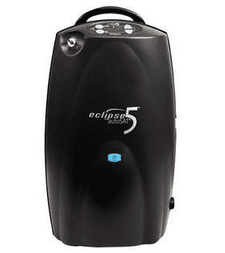
The SeQual Eclipse 5 is the 4th generation model in SeQual’s extremely popular Eclipse line of concentrators.
In fact, the Eclipse 5 is one of the best selling and most reliable continuous flow portable oxygen concentrators on the market. It offers the highest oxygen output on the market, gets good battery life, and it was also designed for the US Military.
What Comes With Your Eclipse 5?
- SeQual Eclipse 5 Portable Oxygen Concentrator
- 1x Battery
- AC Power Supply
- DC Power Supply
- Travel Cart
- Accessory Bag
- Tubing
- Filter
- Manual
- 3 Year Warranty
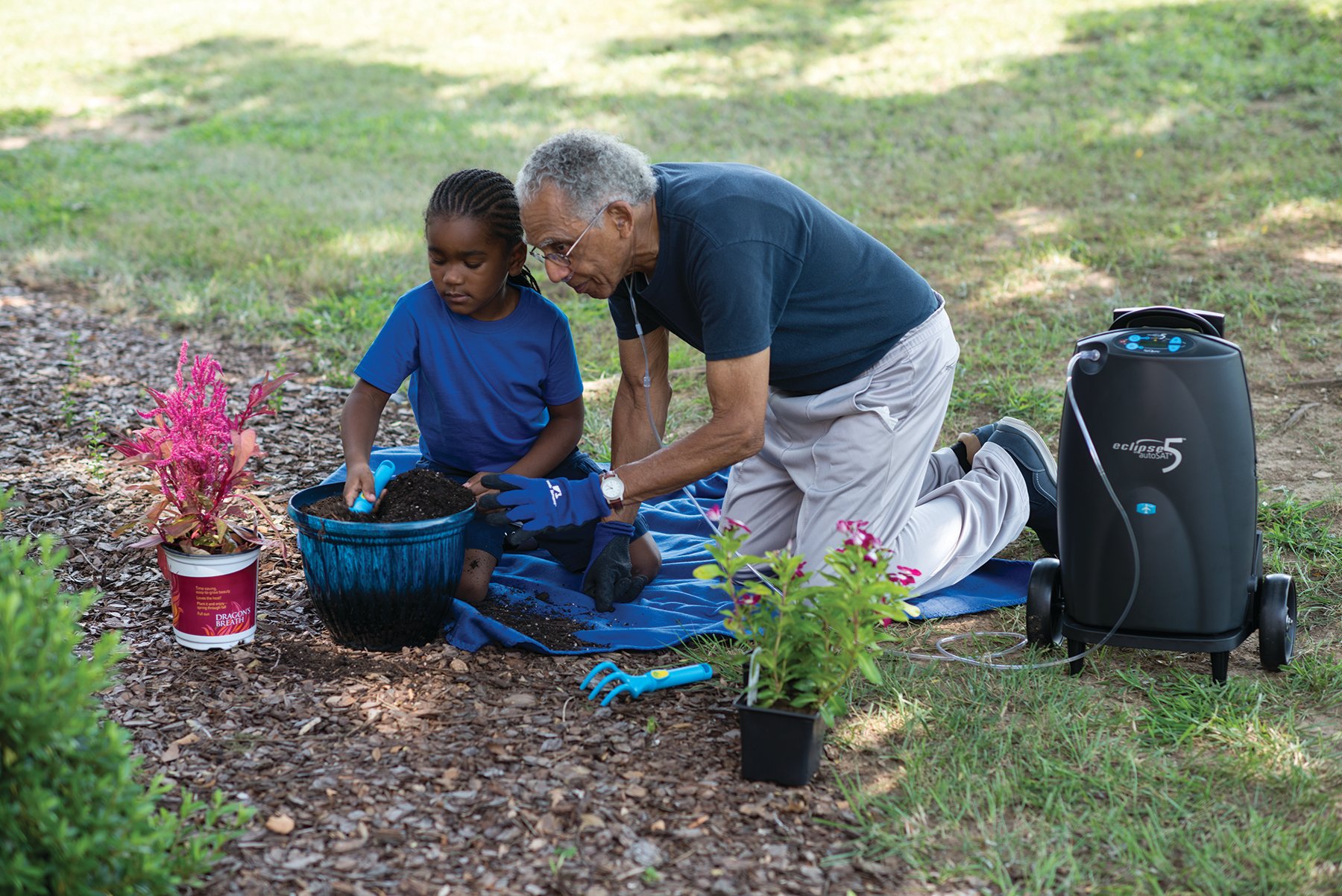
Other COPD Gift Ideas
FDA Approved Pulse Oximetry Monitor
![]()
Having a FDA approved pulse oximetry monitor indicates whether or not you are getting enough oxygen.The large, easy to read LED display and accommodates fingers of all sizes, and is each to bring anywhere due to its compact size.
Blood Pressure Monitor
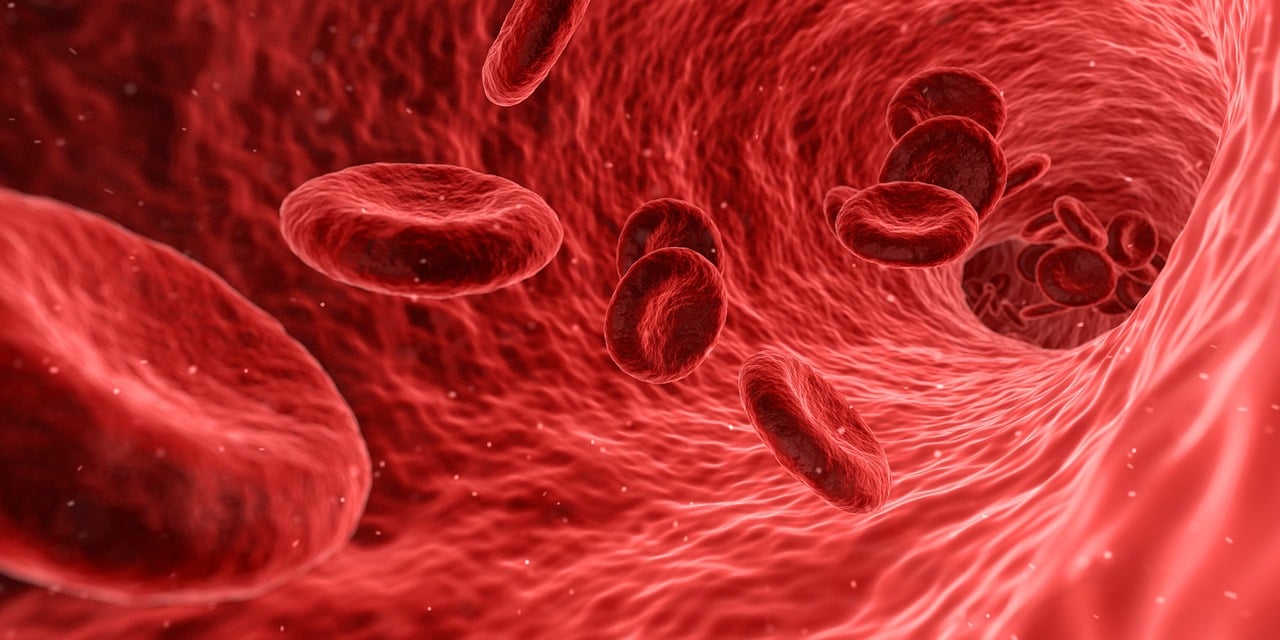
A blood pressure monitor is an essential piece of a COPD management kit! Many people with COPD also struggle with other complications and may take a variety of medications. Maintaining healthy blood pressure is an essential part of disease management.
Blood Pressure Monitor can also display an automatic alert if an irregular heartbeat is detected and the ability to remember the last 100 BP readings. All great safety features that help to better understand what the body is doing and how it functions in certain situations.
Nebulizer Compressor Kit
A nebulizer administers medication directly into the COPD patient's airways, helping them breathe easier.
Some COPD patients are lucky enough to have insurance that pays for their nebulizers, but this is not always the case and many are unable to afford one.
If your loved one does not have a nebulizer compressor kit, it is a great gift that keeps on giving.
Custom carrying backpack for the Inogen One G5

A custom carry backpack is just the ticket your loved one needs to live a more active and independent lifestyle.
This backpack is lightweight and durable, this one can be used with almost any compact portable oxygen concentrator but it fits the One G5 perfectly. It is perfect for COPD patients who like to travel and be active.
COPD for Dummies
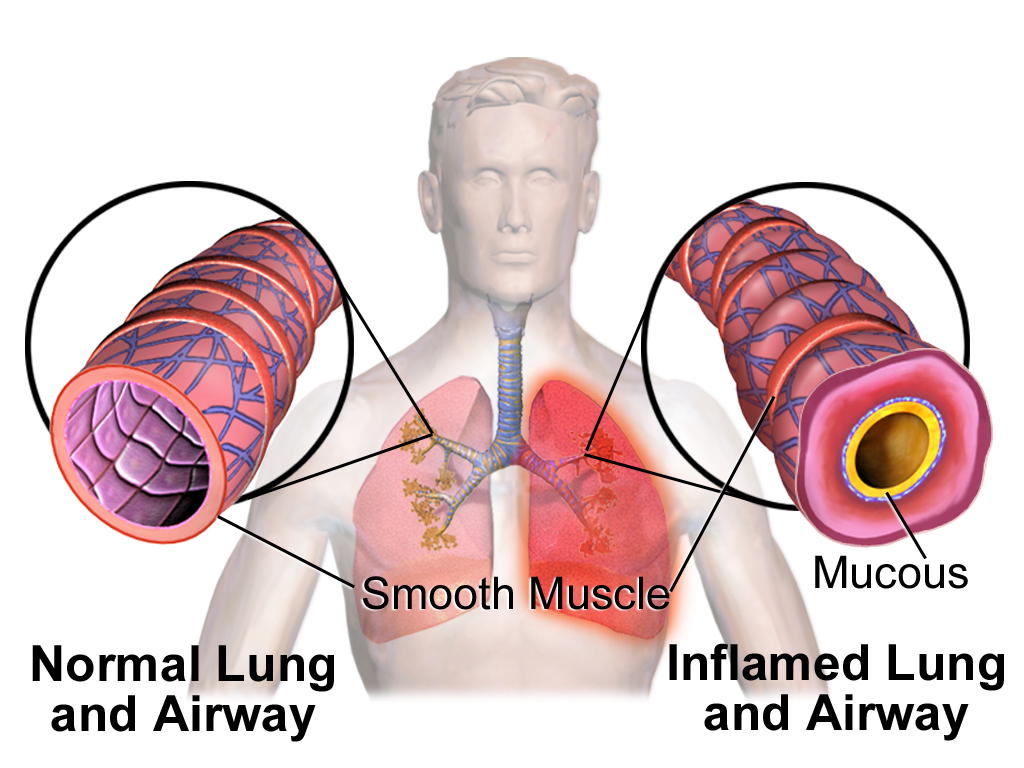
COPD for Dummies or any other resource that helps explain COPD is a great gift that help educate the family on COPD so everyone is capable of lending a helping hand, but also so that everyone can understand the disease and its toll it take on those diagnosed with it
The book includes the most basic information on COPD symptoms, diagnosis, causes, treatment, and how to cope with COPD.
This may be a nice gift for those who were recently diagnosed with COPD.
Overview
![]()
Make the holidays extra special this season with gifts for people in your life with COPD! Buying them gifts that are practical and useful for disease management can help them all year around become more independent and healthier!
If you are interested in the process of buying a portable oxygen concentrator or accessories to go with their portable oxygen concentrator simply call 1+(800)-946-1201
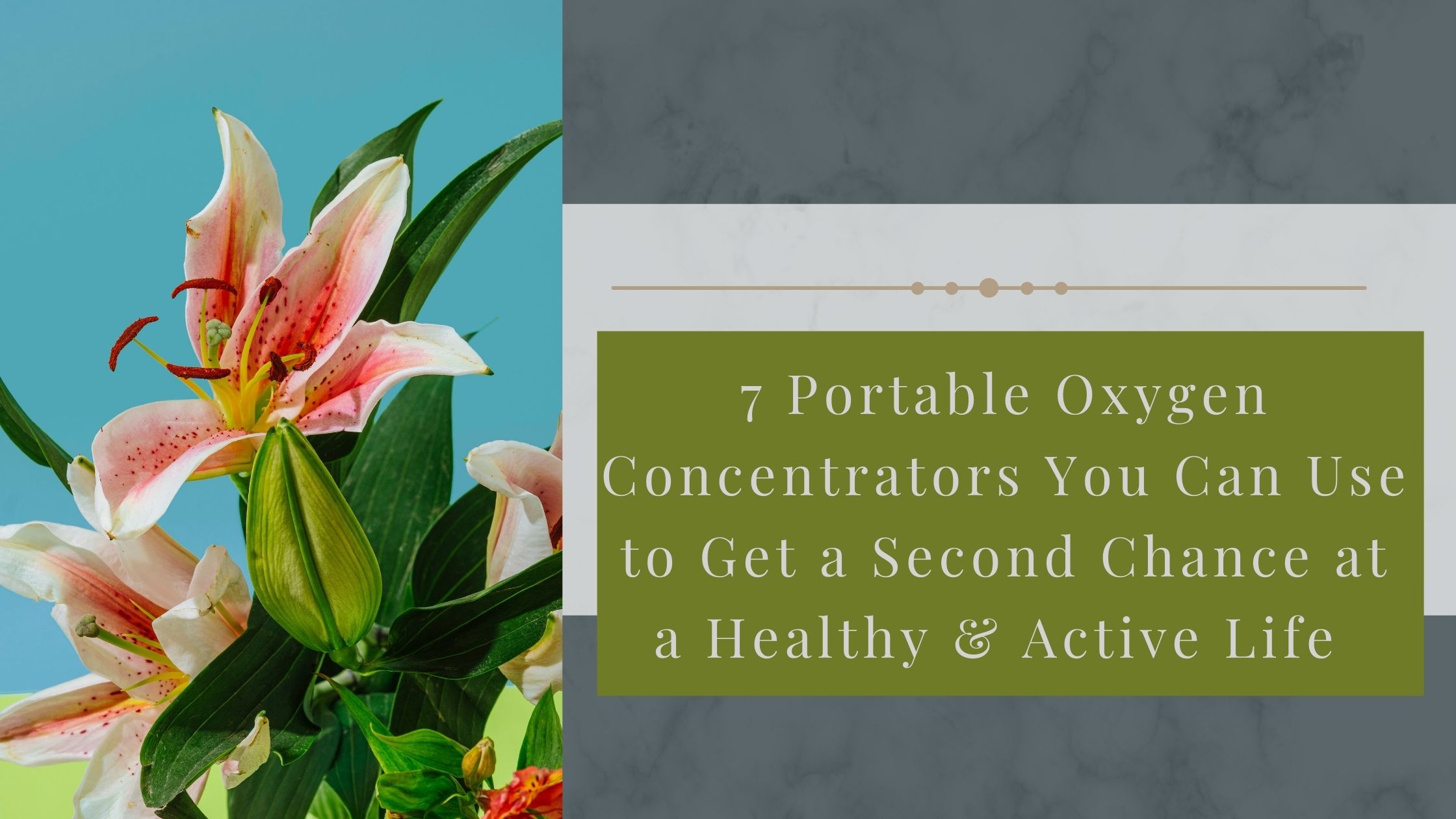
It is true that when people are diagnosed with chronic obstructive pulmonary disease (COPD) or any other chronic respiratory illness their lives change forever.
Even though you might feel physically the exact same way leaving the doctor's office that day as you did when you walked in, your mentality is noticeably different. After you are diagnosed with COPD or once you have reached a point in your diagnosis where you need to be out on oxygen you are given another chance.
{{cta('43b79c5e-6bd6-4f02-ac27-2d038d20c146','justifycenter')}}
It is not a death sentence, and it should not be treated as one. You can look at this moment as a second chance.
Now you know why you are coughing excessively, feeling tired, short of breath, moody and all of the things you were experiencing are due to something in your body that isn’t exactly right. And while that thing that isn’t exactly right is not curable, you can treat it and make it more manageable day to day.
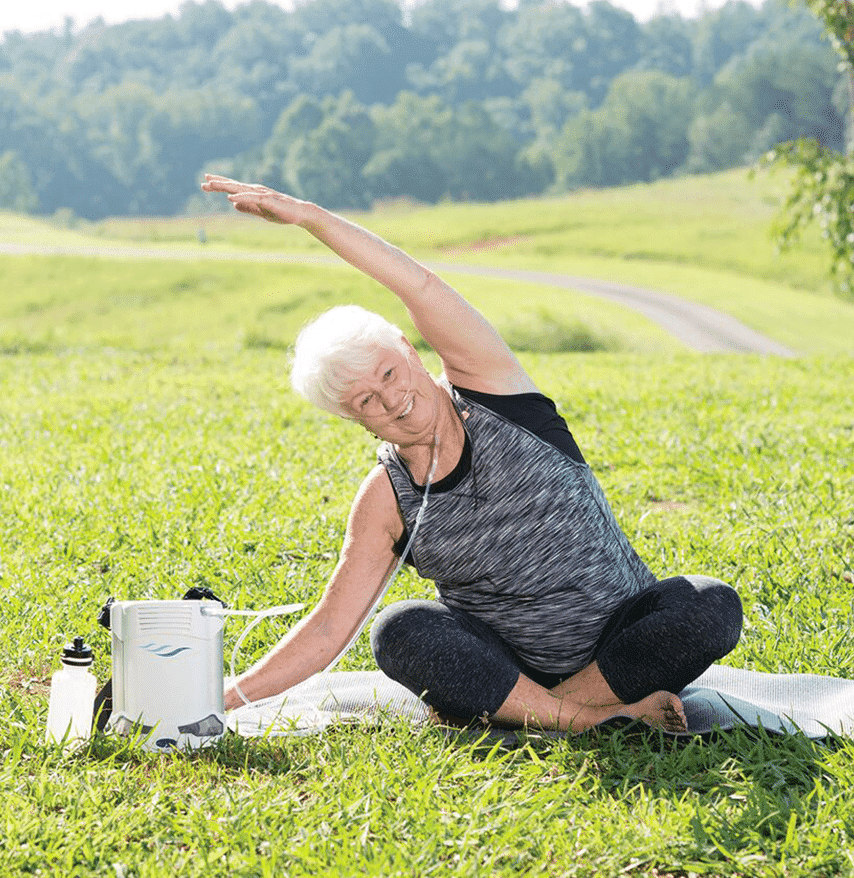
There are levels of severity of COPD that are broken down based on your lungs capacity and their ability to do their job! At a certain point in your diagnosis, there may come a time where you need extra help getting oxygen pumping through your body.
You will go through a series of tests that will display to you doctor whether or not you need supplemental oxygen therapy. As with any prescription drug, you will be prescribed medical oxygen, and within your prescription will be instructions on how much oxygen you need and when.
.jpg)
Supplemental oxygen therapy is designed to help you improve your lifestyle and quality of life. And similarly to prescription medication, too much is too much and too little isn’t enough, so be sure you follow your doctor's instructions when it comes to oxygen therapy.
This also means it's essential to have an oxygen therapy device that can handle your oxygen needs. You can either go with an oxygen tank or a portable oxygen concentrator (POC).

Both devices will give you oxygen, but one device is an older more traditional source of oxygen (tanks) while the other (POCs) is a newer more advanced device that has a number of qualities that make everyday life easier.
To learn more about you oxygen therapy options read this blog: Upgrading From an Oxygen Tank to the Respironics SimplyGo Portable Oxygen Concentrator
So let's get down to it… Once you get that oxygen therapy prescription, your oxygen therapy gives you another chance to treat your disease so it is more manageable and you symptoms are less intrusive.

Oxygen therapy is also the one treatment that has actually been proven to add years to your life, and not only time, but quality time where you can eat right, exercise, and sleep well (if you put in the work).
This is not to say that there will be hard days, COPD and respiratory illness across the board are no joke, and they affect millions of people across the world.
How Oxygen Therapy Can Save your Life

When you get on oxygen you will be sourcing your lungs with extra medical grade pure oxygen so that oxygen can move fluidly throughout your blood and muscles.
With the help of you oxygen therapy you will have an easier time getting to sleep and staying asleep. Exercise will come more easily because you won't fee las tired or short of breath. Oxygen therapy is giving you the tools to live an active and healthy life, so it is not not only extending your life but improving the quality of life you have.
Here are the 7 portable oxygen concentrators, and their most attractive features, that will help you live a long and healthy life.
Inogen One G4
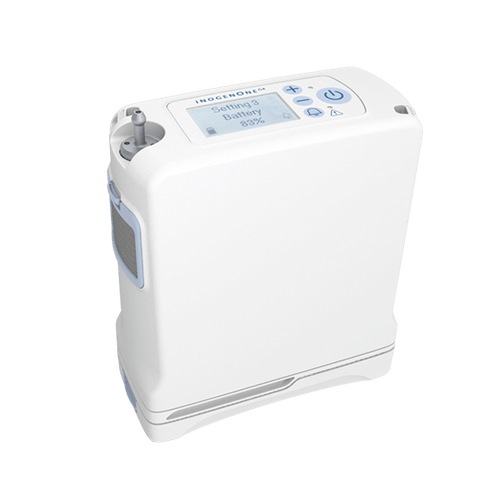
The Inogen One G4 is a pulse flow device, it only weighs 2.8 pounds, that's no more than a basic laptop computer.
Caire Freestyle Comfort
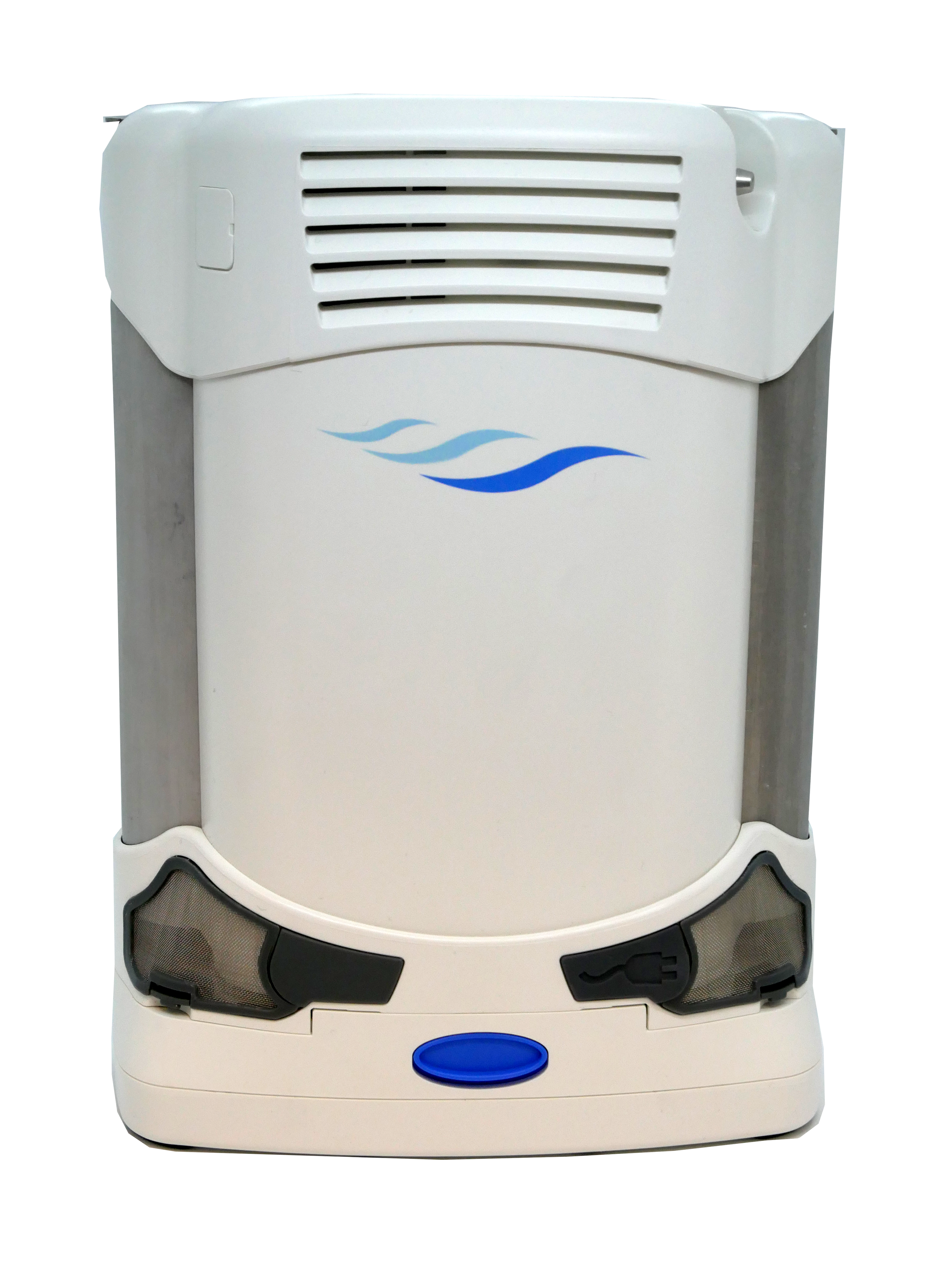
The Caire Freestyle Comfort is also a pulse flow device, it has a long lasting battery life. With the double battery installed it can last for up to 8 hours on a setting of 2 LMP.
Inogen One G5

The Inogen One G5 is the most popular pulse flow device on the market because it is so powerful. It can operate on any setting 1-6 LPM without sacrificing battery life.
Respironics SimplyGo
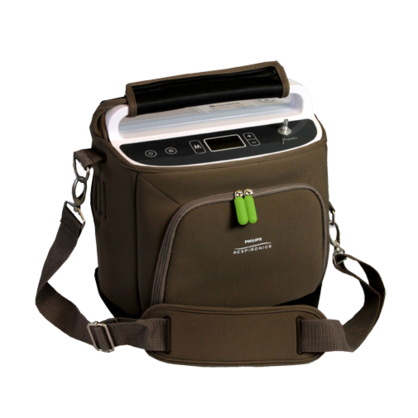
The Respironics SimplyGo is the lightest continuous flow portable oxygen concentrator. It weighs 10 pounds and can give off pulse or continuous oxygen depending on the setting you set it to.
Oxlife Freedom
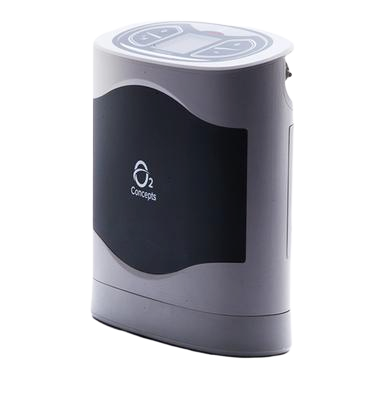
The Oxlife Freedom is a pulse flow device that is the first of its kind. It is equipped with tools to help oxygen patients and their healthcare providers better manage their respiratory conditions! The built in DNA or Dynamic Network Analysis is cutting edge technology that allows your healthcare provider to more closely monitor your oxygen use.
Oxlife Independence
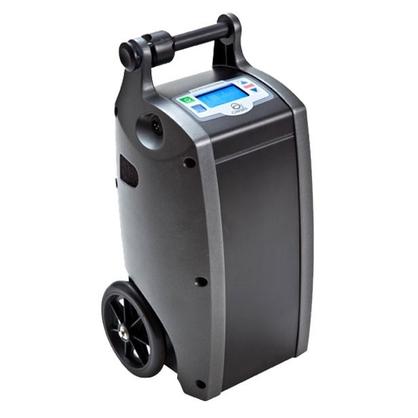
The Oxlife Independence portable oxygen concentrator is a continuous and pulse flow device is also the first of its kind. It is the world’s first “smart” portable oxygen concentrator. It is equipped with the same DNA technology inside the Oxlife Freedom which is powered by the Verizon network. The Oxlife Independence can monitor your usage and corresponding environmental conditions to adapt and proactively support your needs. It tracks vital data like hours used, breathing rate, ambulation, and more!
SeQual Eclipse 5

The SeQual Eclipse 5 is both a continuous and pulse flow device. It is known for offering the highest oxygen output on the market, gets good battery life, and it was also designed for the US Military.. It is one of the most popular continuous flow portable oxygen concentrators on the market because of its long-standing track record for being durable and reliable. If it’s good enough for the US Military, that should tell you something.
Staying On Track to Live A Healthy Life on Oxygen
If any of these portable oxygen concentrators are calling your name, simply call 1(800)-946-1201 to speak with an oxygen specialist about their other features and how it can fit into your life!
{{cta('fa8abc2a-1e88-4fa3-82fd-1cb5b9ed43b2','justifycenter')}}
Once you have an oxygen device that you trust you can start adjusting your lifestyle to a more positive and active one that cultivates more energy and happiness. We would like to leave you with some positive suggestions for everyday life that will make the challenges you face dealing with respiratory disease more manageable.
Keep a Journal
Keeping track of your oxygen levels, symptoms, triggers, and health related issues are valuable for you and your doctor. This can give your doctor an inside look at your life at home, and how your symptoms evolve and change so they can advise a course of action and treatment plan that works for you.
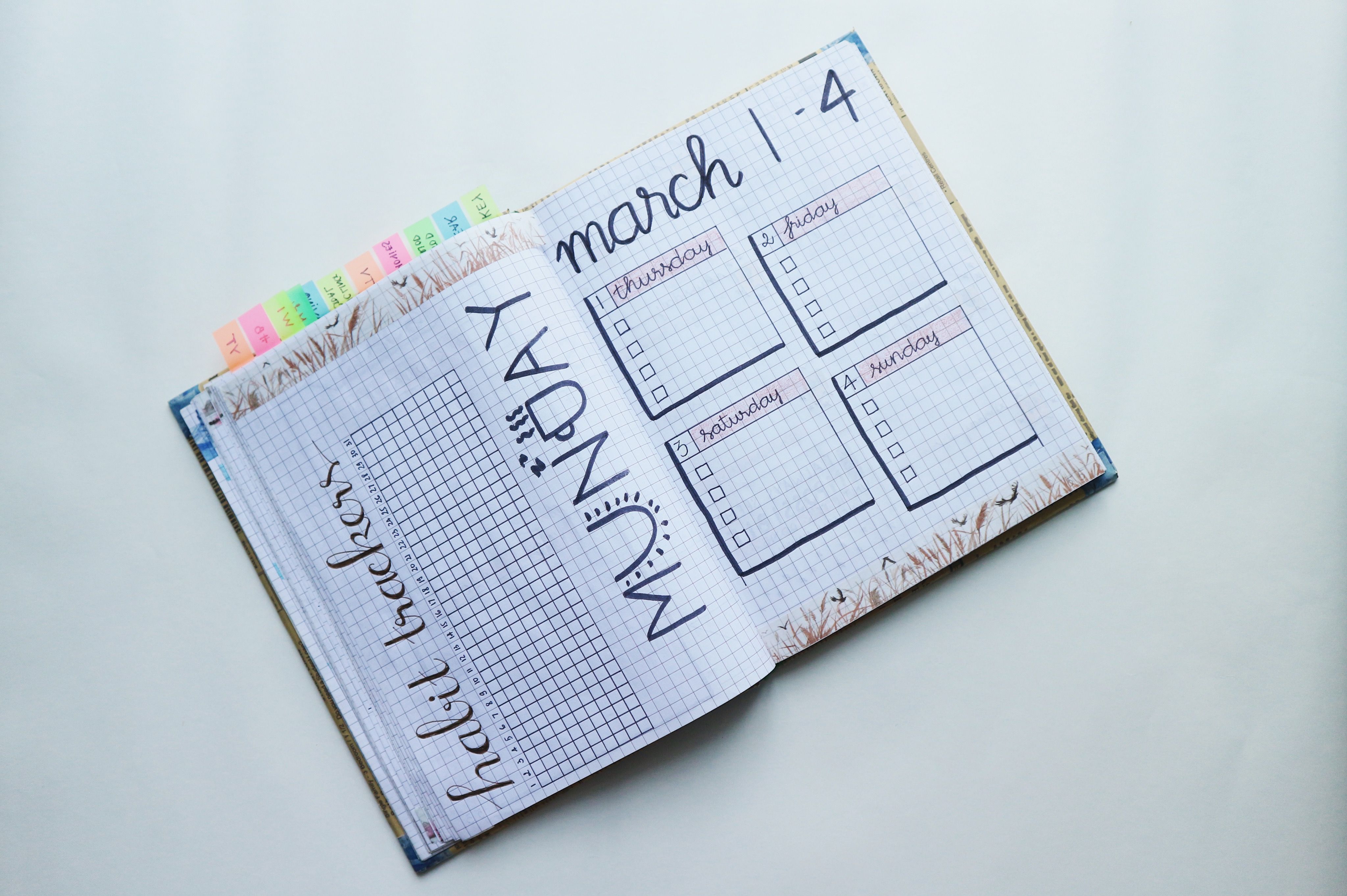
It is also valuable to jot down your emotions, to do lists, write down goals, and stories. Writing ignites a creative part of your brain, that like your muscles need exercise.
Even if you haven't written anything down for years, it is never too late to pick up a pen and paper and write down your struggles, achievements and everything in between.
You will be surprised how helpful it is to make decisions when you create a pros and cons list, or how writing down something that happened to you that day can enhance your memory.
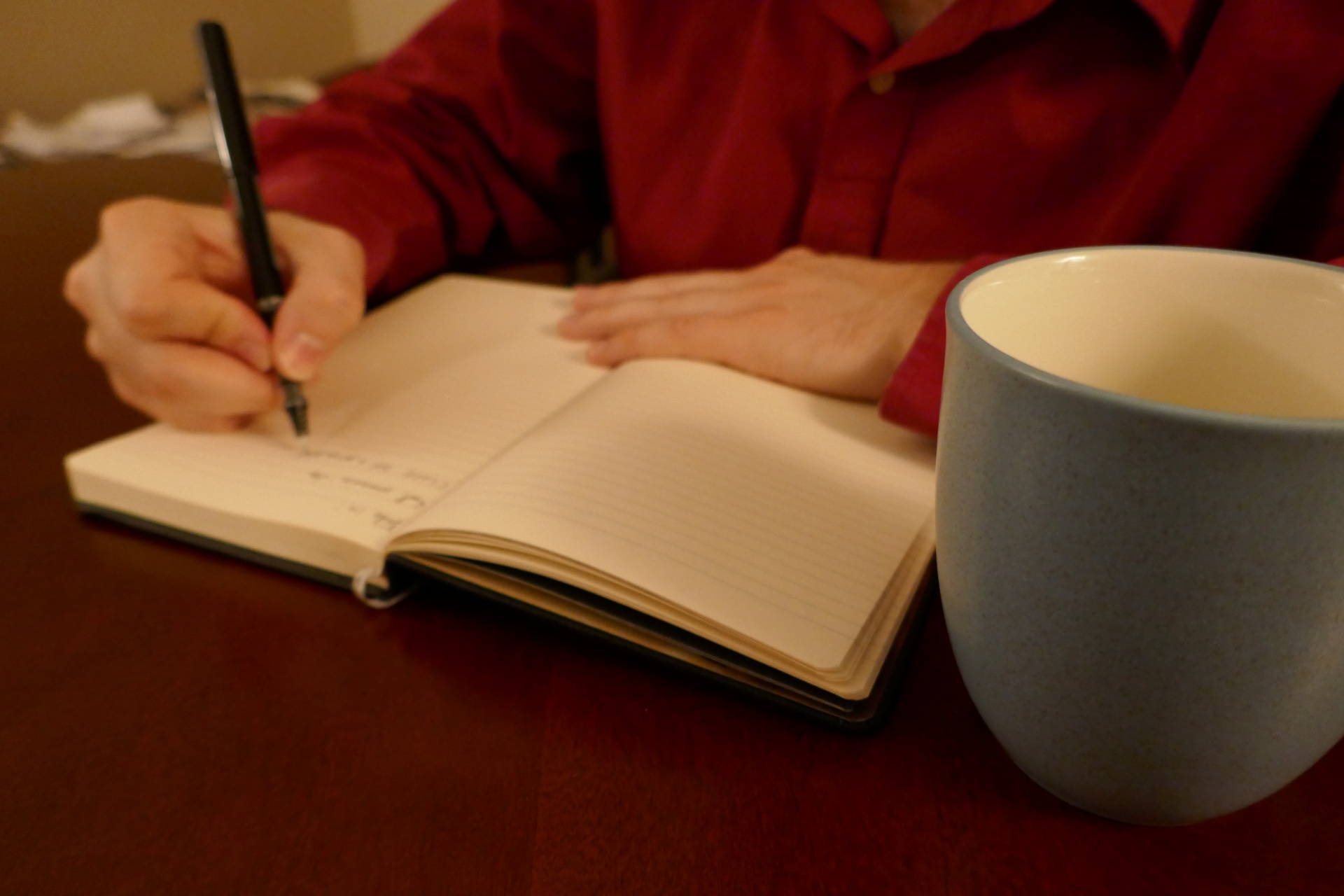
Exercise in the Water
We hear all the time that oxygen patients also require exercise as treatment. But for many, exercise can cause a lot of other issues throughout the body.
People with COPD may have muscle or bone conditions that make exercise painful and high impact workouts can be impossible. Water exercises give you the alternative for a less stress induced workout on the body.
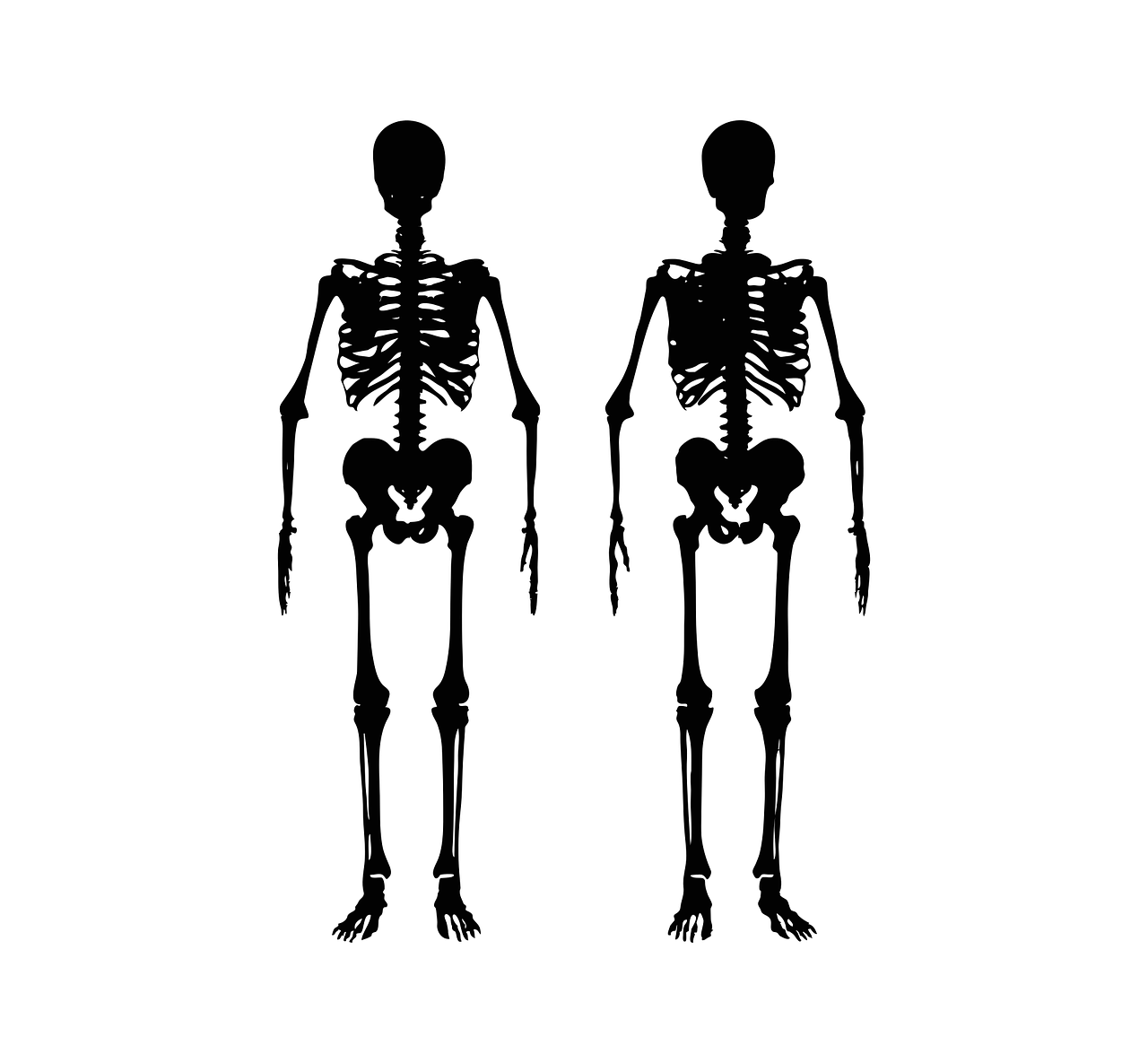
A 2013 study found that water-based exercises might increase a person’s exercise capacity and quality of life. In people with COPD and physical disabilities, water-based exercises were more effective than both land-based exercise and no exercise.
The researchers suggested that these effects might be due to the unique properties of water, which support body weight through buoyancy and provide resistance to increase exercise intensity
Breathing with Purpose to Avoid Excess Anxiety

Avoiding stress and anxiety are two big ones when it comes to easing COPD symptoms. Breathing can be directly related to relaxation or lack there of.
Anxiety will come up for the patient and caretakers for everyone with chronic illness. The very real stressors that come with chronic illness include medical emergencies, financial worries, everyday care issues.
So these stressors are unavoidable, and the emotional distress can trigger a physical reaction that may lead to you being hospitalized for exacerbated symptoms, known as a COPD flare up.
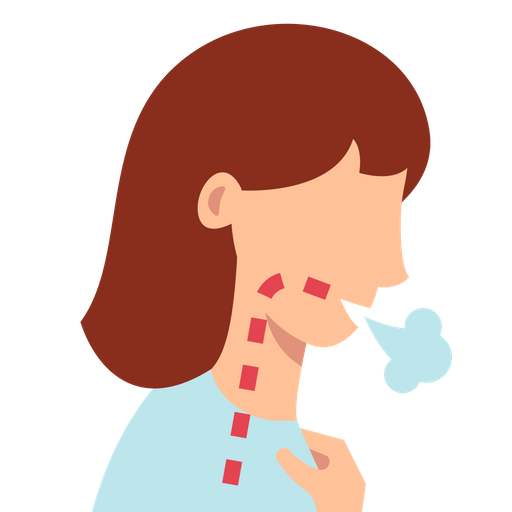
Naturally when humans feel afraid or upset, the heart rate, and blood pressure increase, this causes the breathing to speed up. Anxiety and fast breathing means more shortness of breath. For people with respiratory disease who already suffer from shortness of breath, this can generate even more anxiety, which causes further shortness of breath…It’s a toxic cycle.
So how can you and your caretaker help each other learn to relax in these moments? Try following three basic relaxation techniques from the Crossroads Hospice online resource center:

Take 10 minute to do each of the following breathing techniques:
- Deep breathing. Sit comfortably, feet on the floor. Put one hand on your chest, the other just under your ribs. Breathe slowly through your nose, counting to five. Only the hand at your belly should rise. Exhale slowly, counting to five. Repeat.
- Muscle relaxation. Lie down or sit comfortably. Starting with your toes, tense and relax your muscles, moving up your body to calves, thighs, etc. Count to five while tensing and to 30 while relaxing. Notice the difference between tense and relaxed.
- Visualization. In a quiet place, lie down or sit comfortably. Imagine yourself at your favorite place of tranquility (beach, mountains, etc.). Bring in as many elements of the place as you can: what you would be seeing, smelling, hearing, touching.
Managing Fatigue Effectively
![]()
It's common for COPD patients and oxygen users to “run out of gas” even when doing simple things around the house.
You can learn to conserve energy—The energy that keeps you awake and moving around—so you are able to enjoy activities and exercise that you love to do for longer.
Try getting into the rhythm of this simple strategy- Understand that you have a limited amount of energy each day. If you’re mindful of how you use that energy by creating a daily routine, for chorus, everyday necessities, any medical treatment, and exercise and life’s pleasures.

Plan out your days with the pace for each activity. Keep these tactics in mind:
- DON’T rush, allow plenty time for what needs to get done.
- Alternate activity with rest.
- Divide large chores into smaller tasks spread across the day or week.
- Work smarter by minimizing trips up/down stairs, shopping with a list and in as few stores as possible, cook in bulk and freeze the leftovers, after bathing, rest in a terrycloth bathrobe instead of drying with a towel. These little things conserve a lot of energy over time.
- Don’t be afraid to ask for help when you need it. You can order your medications and groceries to be delivered.Throughout the day, look for opportunities to sit down, and minimize time walking, lifting, and bending (use extensions bending and reaching).
- Sit down while cooking, cleaning, bathing, dressing, or grooming face and hair, have a stool or seat handy in multiple rooms of your house.
- Stay organized and lay out supplies at waist height so everything is within easy reach before you start cooking, cleaning, bathing, or dressing.
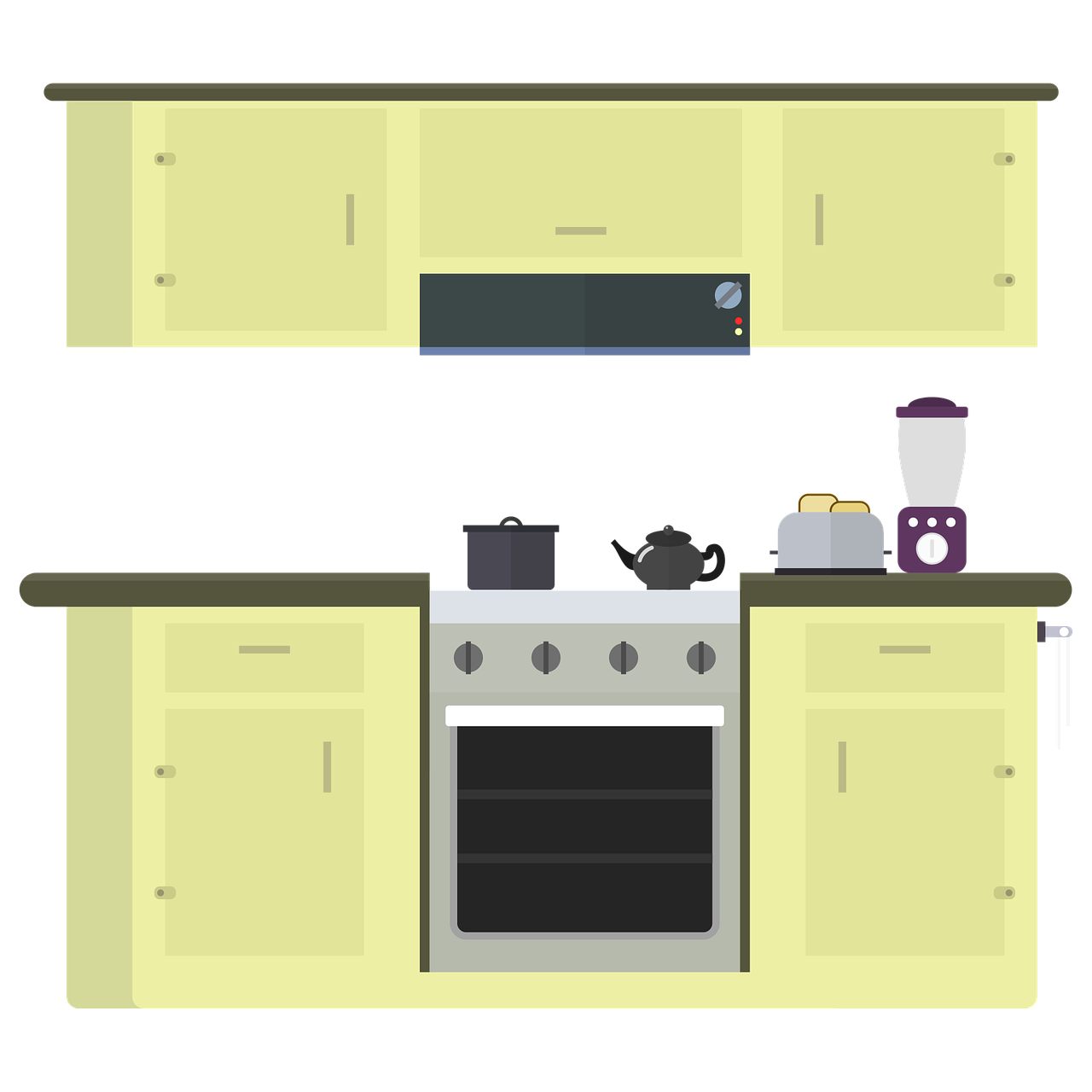
- Use an elevated toilet seat, a grabber for objects, and elongated handles on shoe horns, brushes, and dustpans.
By learning how to operate at a mild pace with lots of helpful tools throughout your house, daily life gets easier and easier, and your tank of energy will get you further and further the more you conserve energy.
Overview
Of course, none of these simple everyday changes listed above will make much of a difference if you are lugging around a heavy oxygen tank, or are stressed and worried about getting your next oxygen delivery.

First step to getting your second chance at a healthy and active life after being prescribed oxygen, is getting an oxygen device that can help you through life, rather than holds you back.
Talk to your doctor about your oxygen device options and how your prescription will work day to day, and then call us at LPT Medical at 1(800)-946-1201 so we can help you find a device that fits your needs and lifestyle.
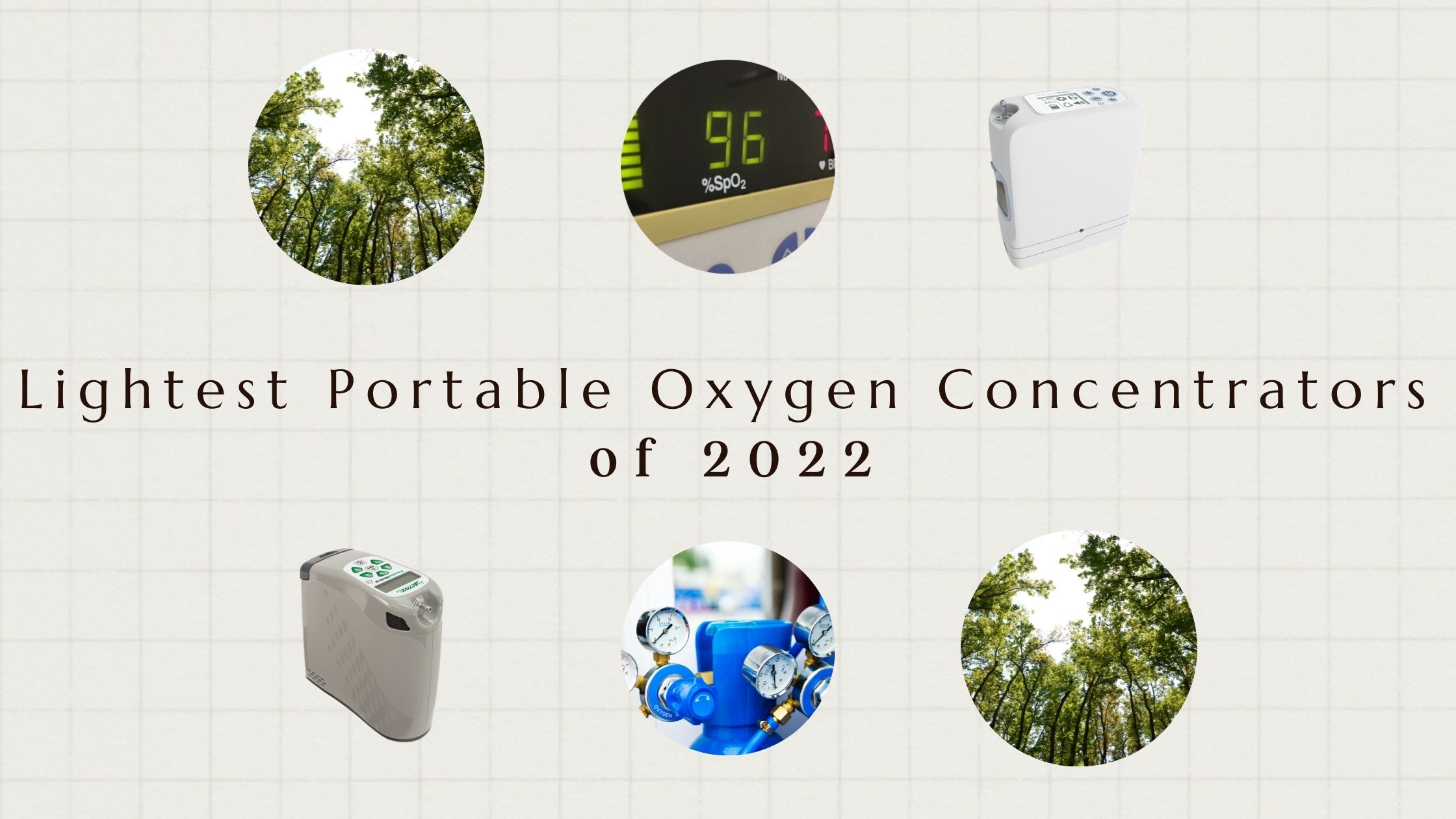
If you’re looking for a portable oxygen concentrator for sale in 2022 you’ve likely put a lot of time and effort into your research. We created this blog for you to make your life easier while shopping for a portable oxygen concentrator that— first and foremost — meets your oxygen demands, but also one that is affordable, lightweight, and easy to use.
This is often easier said than done because many sites offer knockoff or low-quality oxygen therapy devices that don’t live up to their hype. One good way to avoid these scams is to do some research on the brand of oxygen concentrator you’re interested in.
{{cta('fa8abc2a-1e88-4fa3-82fd-1cb5b9ed43b2','justifycenter')}}
Brands like Inogen, Respironics, and AirSep are some of the most trusted on the market. There is a lot of information on the internet about these companies, so if you search a brand and can’t find any information on them, it’s best to look elsewhere.
Luckily, here at LPT Medical, we only sell portable oxygen concentrators from the most trusted brands in the world
In this guide, we’ll be taking a look at the lightest pulse flow portable oxygen concentrators available to you in the year 2022. If you have any questions or concerns, feel free to leave them in the comment section below, or call 1 +(800)-946-1201.
What is a Pulse Flow Oxygen Concentrator?
Portable oxygen concentrators are generally divided into two different categories: pulse flow and continuous flow.
Pulse dose portable oxygen concentrators are much more technically advanced than their continuous flow counterparts because they offer a system that delivers oxygen in boluses (doses) only when it’s needed by the oxygen patient.
Alternatively, continuous flow units put out a constant stream of oxygen irrespective of the user’s breathing.
It’s important to understand the difference between these two devices because the most “lightweight portable oxygen concentrators” are pulse dose devices. This type of oxygen delivery isn’t advised for all patients.
You maye require continuous oxygen flow to treat your respiratory condition so you should first speak with your doctor or pulmonologist and consider the pros and cons. Read on to learn about some of the lightest pulse flow units on the market.
The AirSep Focus
The AirSep Focus portable oxygen concentrator is one of the lightest weight portable oxygen concentrators. Weighing in at just 1.75 pounds, you’ll be amazed at what AirSep has been able to pull off with this small portable oxygen concentrator.
In fact, it’s so small that it can be worn on your belt or stored in a purse! AirSep was one of the first companies to produce an FAA-approved oxygen concentrator, so it’s no surprise that they were able to accomplish this feat as well.
The dimensions of the AirSep Focus are just 6.4” H x 4.8” W x 2.5” L, so this oxygenator is as small as it is light. Because of its form factor, many oxygen patients and retailers have given it the name the “mini portable oxygen concentrator.”
Owners of the AirSep Focus find that they’re able to do more and achieve more due to the device’s small and lightweight design. Rather than having to lug around a heavy and bulky oxygenator, many people forget they’re even wearing their Focus.
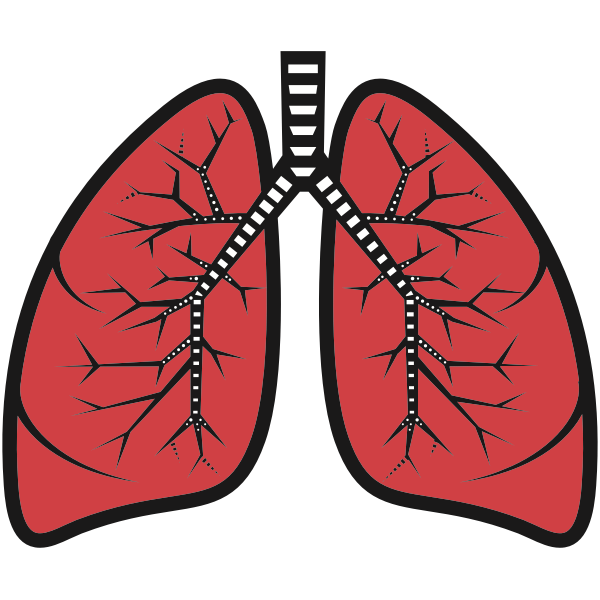
Pretty much the only downside to the AirSep Focus is that it only goes up to a flow setting of 2 with a maximum oxygen output of 330 ml/min. Unfortunately, this isn’t enough oxygen to suit many oxygen patients, so it would not be uncommon if this particular device won;t work for you and your condition.
Regardless of this downside, it’s pretty remarkable what AirSep has been able to accomplish, and it’s innovative design gives us a glimpse into the future of what could become of other concentrators in the future.
The Inogen One G4
The Inogen One G4 is another pulse flow portable oxygen concentrator praised for its extremely lightweight design. At 2.8 pounds, it’s just over a pound heavier than the AirSep Focus — still very light for a modern POC.
It’s also the lightest portable oxygen concentrator to offer pulse flow settings 1 to 3 (630 ml/min of 90% (+6%/-3%) oxygen). So it is slightly more powerful than the mini AirSep device listed above.
One major benefit of the Inogen G4 over the AirSep Focus is that it offers almost twice as much oxygen output and one additional flow setting. While you likely won’t want to wear the G4 on your belt, it will still feel very light compared to the large majority of concentrators on the market.
So, if you experience back pain or another issue but still require a higher oxygen output, the G4 may be a better option for you.
Last but certainly not least, the G4 is backed by the Inogen brand, one of the most trusted and reliable portable oxygen companies in the world.
Since the early 2000s, Imogen has been pushing the industry standard higher and higher by offering some of the most useful and convenient oxygen devices ever made.
As opposed to the bulky and heavy oxygen tanks of the past century, Inogen knew it was time for a change. Each machine they release has unique features and strengths so they’re always worth looking into.
The Inogen One G5
The Inogen One G5 is the latest pulse flow portable oxygen concentrator by Inogen. It was released in the summer of 2019 and is widely considered to be the best portable oxygen concentrator currently on the market.
Aside from offering the highest oxygen output of any pulse flow unit and the longest battery life behind the CAIRE Freestyle Comfort, it is also one of the lightest portable oxygen concentrators weighing in at just 4.7 pounds.
When compared to the AirSep Focus, the Inogen One G5 weighs quite a bit more — almost 3 pounds more to be exact. But there’s a reason for this! The G5 has a total oxygen output of 1260 ml/min as opposed to the Focus’ 330 ml/min.
With the basic single battery that comes with the G5, it lasts about 6.5 hours on one charge whereas the Focus battery will only last about 1.5 hours.
So yes, the Inogen One G5 weighs quite a bit more than the Focus, but in terms of efficiency and power, the G5 is miles ahead of the AirSep Focus.
While it may be tempting to choose the lightest portable oxygen concentrator you can find, it’s worth taking all aspects into consideration before making a final decision. Check out this post to learn more about how the G5 has revolutionized oxygen therapy.
Another great aspect of the Inogen One G5 is all of the oxygen accessories you can get to make the most of it. Unlike most oxygen companies, Inogen loves to provide their audience with plenty of options for customizing their oxygen use allowing for more freedom, comfort, and ease-of-use.
Some of our favorites include the Inogen G5 backpack which allows you to carry plenty of personal belongings with your G5; and the external battery charger which enables you to charge two G5 batteries at once — one on the G5 and the other on the external charger.
The Inogen One G3
Yes, you read that right — another Inogen concentrator has made it onto this list! Why? Because the Inogen One G3 only weighs 0.1 pounds more than the Inogen One G5. In the grand scheme of things, this is a pretty negligible amount especially when you have many other factors to consider when choosing a POC.
Despite being released all the way back in 2015, the G3 remains very relevant in the year 2022 which is due, in part, to its lightweight design.
Similar to the Inogen One G5, the G3 is an all-around great oxygen machine. It offers up to 4.5 hours of battery life with the 8-cell battery and it delivers up to 1050 ml/min of 90% oxygen with flow settings 1 through 5. So, despite its lightweight design, the G3 offers plenty of power for COPD patients with higher oxygen demands. It’s also pretty small at just 8.25” H x 8.75” L x 3.0” W.
Believe it or not, the biggest competitor of the G3 is the G5. While Inogen is focused on making each one of their concentrators better than the last, they also want to offer a variety of oxygen generators that meet different needs. What this means is that older portable oxygen concentrators like the G3 will still be relevant many years into the future.
You can also rest easy knowing that Inogene will support these concentrators with repairs, replacement parts, and warranties as long as oxygen patients like you find use in it.
LifeChoice Activox 4L
Last but certainly not least, we have the LifeChoice Activox 4L portable oxygen concentrator. This is one of only two oxygen machines released by ResMed, but it’s arguably the best they have to offer!
At just 4.8 pounds, the LifeChoice Activox 4L weighs the same amount as the Inogen One G3, but it offers some additional features that many oxygen users may find appealing.
Rather than coming with an external battery that attaches to the device, the Activox 4L comes with a powerful internal battery that can last up to 10.25 hours on a flow setting of 1!
In other words, you’ll be getting over twice the battery life of the G3 straight out of the box and you won’t even have to lug around any additional weight. Combined with the external battery, the Activox 4L offers an incredible 15 hours of battery life on a setting of 1!
Conclusion
Out of all the factors to consider when choosing a portable oxygen concentrator, weight is one of the most important. Some patients experience back pain or other health issues that prevent them from carrying a lot of weight so it’s important that these people are able to get the oxygen they need without overburdening themselves.
Other oxygen patients want lightweight portable oxygen concentrators because they’re easier to carry and don’t cause you to become out of breath so quickly.
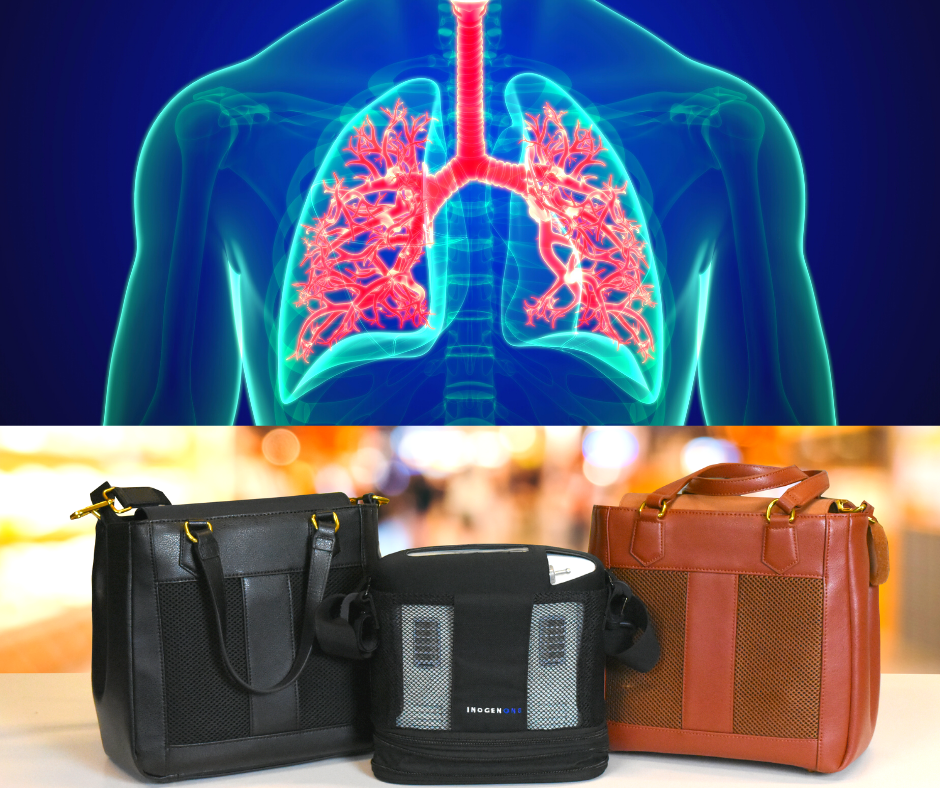
No matter your reason for wanting a light portable oxygen concentrator, the ones listed above are the best the market has to offer. However, there are plenty of other factors to consider before purchasing a POC, so stay tuned to our blogs if you’d like more comparison articles like this.
As always, if you have any questions, be sure to leave them in the comment section below or fill out the form on the side of the page so that one of our respiratory specialists can reach out to you.
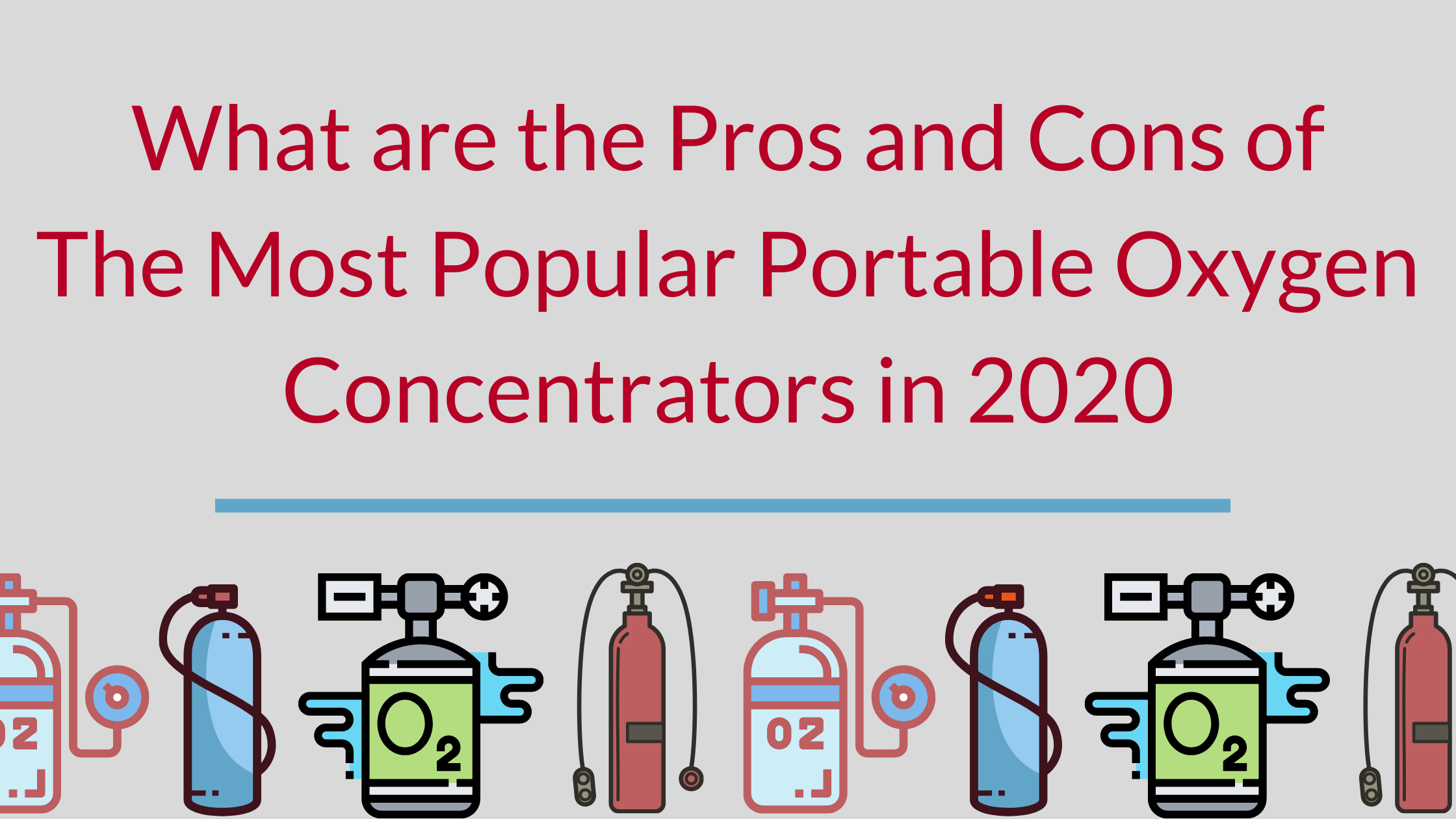
Choosing a portable oxygen concentrator can be tricky because there are a lot of options out there. So best way to begin is by narrowing down your options based on a few components we will discuss in this article.
Based on whether you need pulse dose, continuous dose, or both and the flow rate you need, you will be able to narrow down your options.
{{cta('fa8abc2a-1e88-4fa3-82fd-1cb5b9ed43b2','justifycenter')}}
After you have a list of concentrators that will meet your oxygen requirements, you can continue narrowing down your option based on the unit’s weight, battery life, noise level, and sleep mode technology.
These priorities are based on your lifestyle and the qualities of life you value most.

You can start by asking yourself some questions:
Do I need a unit that is lightweight so that I can carry it easier while running errands?
Do I need a light weight unit so that I can start exercising more often?
Do I need a unit with long lasting battery life because I travel a lot?
Do I need a unit with long lasting battery life because I like to be outside without a power source for long periods of time?
Do I need a quiet unit because I am very sensitive to noise?
Do I need sleep mode technology because I already have trouble sleeping?
Once you have determined the list of units that meet your oxygen needs and have an idea of which lifestyle choices you prioritize, you should have a pretty great idea of which portable oxygen concentrator is best for you!
{{cta('43b79c5e-6bd6-4f02-ac27-2d038d20c146','justifycenter')}}
If you need help setting up these components, please call 1 - 800 - 946 - 1201, and a respiratory specialist will be happy to help guide you through this process.
Below is an infographic that goes through a few of the most popular oxygen concentrators on the market, and the “pros and cons” of each. You will notice there are very few cons, which is why they are so popular!
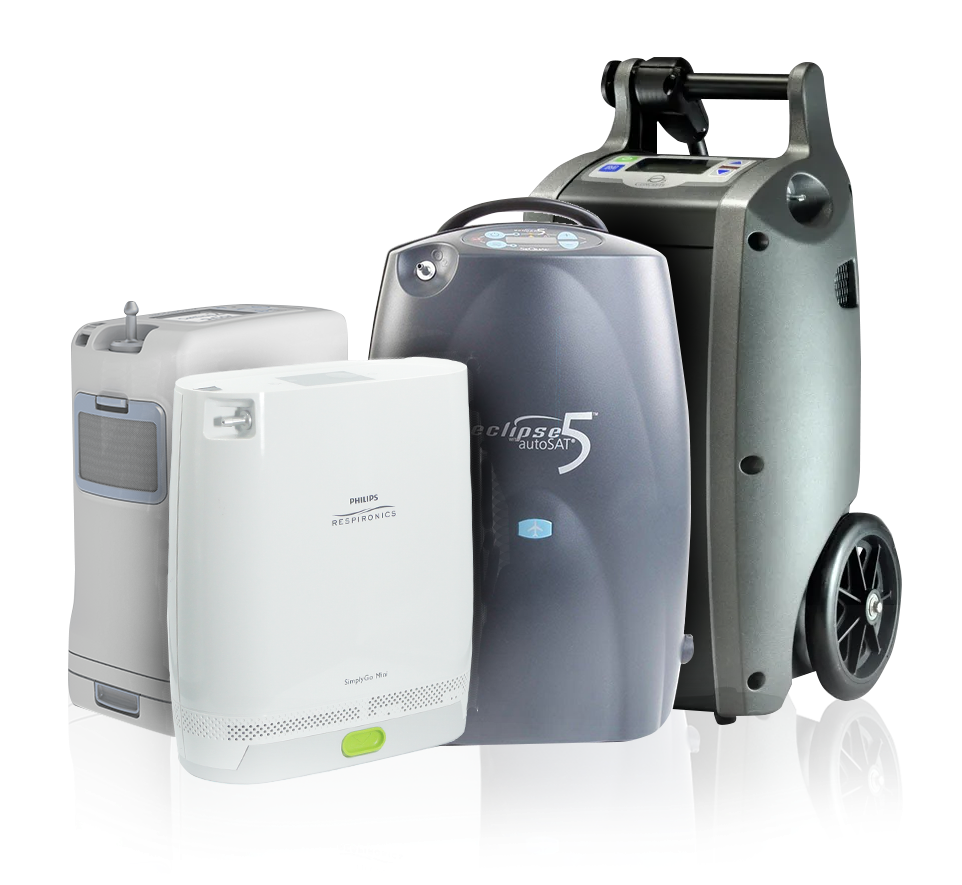
If any of these machines seem to be a great fit for you or if you do not see a machine that fits your needs, call us at 1 - 800 - 946 - 1201 or send us an email at info@lptmedical.com
You’ll be happy to know that every time you call LPT Medical, you’ll be connected with an experienced respiratory specialist who will be able to answer all your questions; whether it’s a question about an oxygen concentrator, financing information, Medicare, or pricing, we’ll get you squared away so you don’t have to worry.
The most popular portable oxygen concentrators of 2020 are linked here:
.png)


 So we can find the best portable oxygen concentrator for your needs!
So we can find the best portable oxygen concentrator for your needs!













